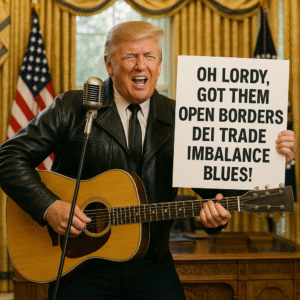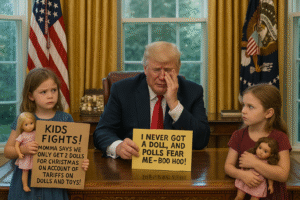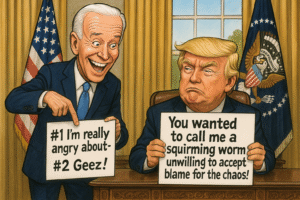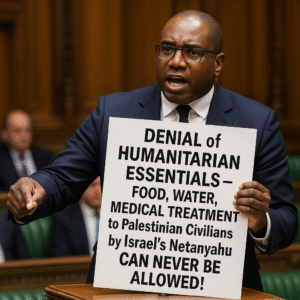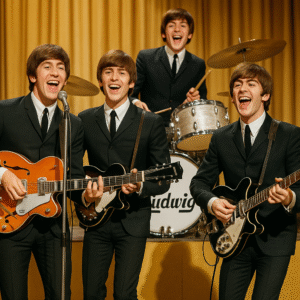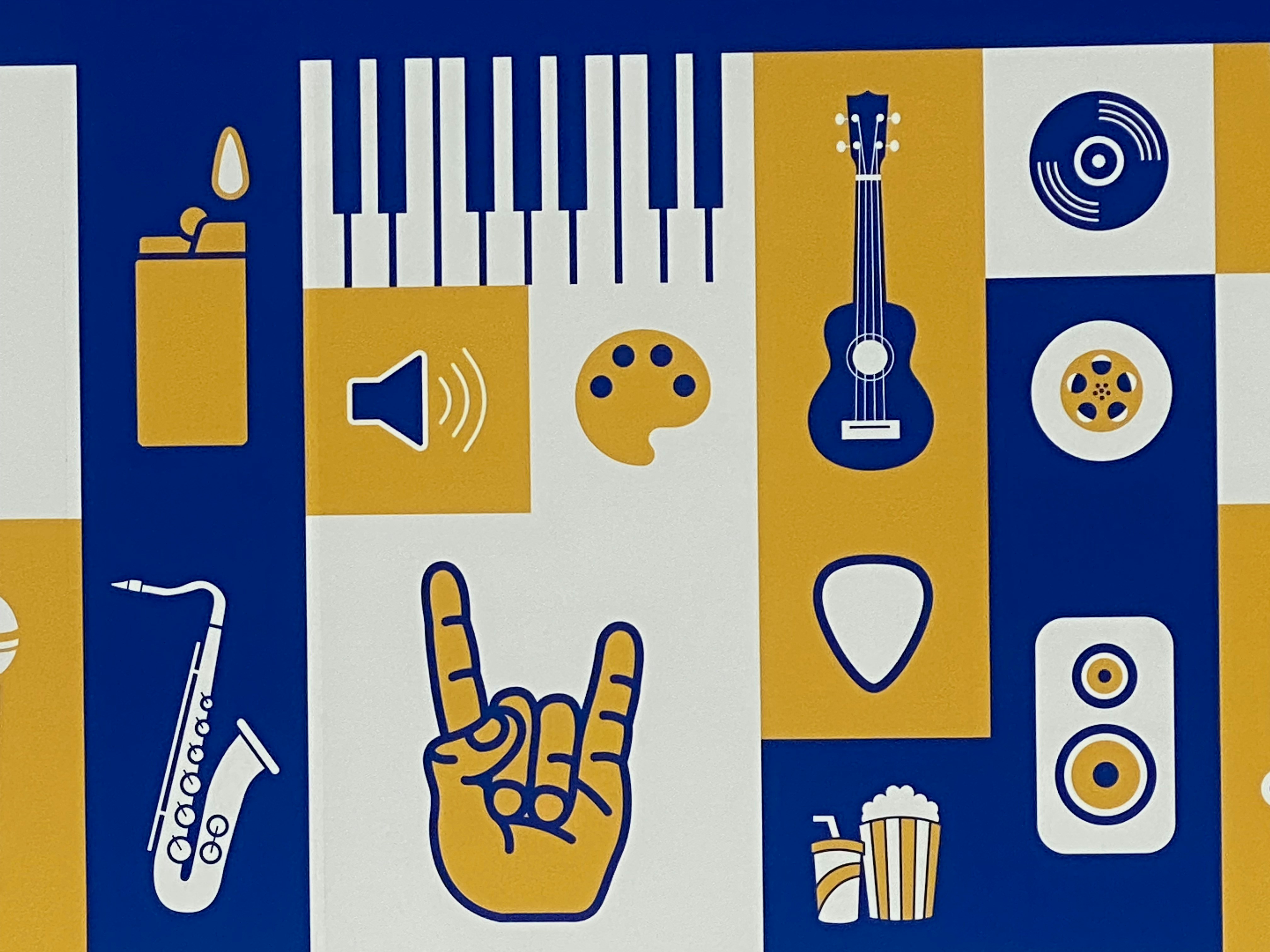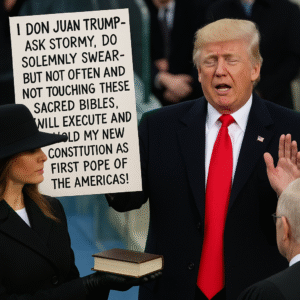
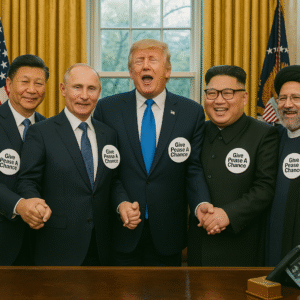
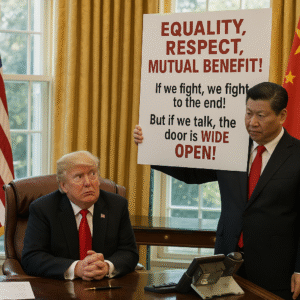


Sept. 25, 2025 ESTABLISHING and GROWING HEALTHY THRIVING RELATION SHIPS!!! by Brianca Lane, Coop & Gang!!! LOVING YOU TRULY!!!
Love the energy you’re bringing into this, Bri—relationships really are the heartbeat of our lives and exploring how to make them flourish is such a powerful journey. Let’s dive deep into establishing and growing healthy, thriving relationships.
🌱 What Defines a Healthy Relationship
A healthy relationship isn’t about perfection—it’s about balance, respect, and growth. Core qualities include:
- Mutual Respect: Valuing each other’s individuality and boundaries.
- Trust & Safety: Feeling secure emotionally and physically.
- Open Communication: Expressing needs, listening deeply, and resolving conflicts constructively.
- Authenticity: Being able to show up as your true self without fear of judgment.
- Shared Growth: Encouraging each other’s dreams, goals, and personal development.
- Balance of Independence & Togetherness: Maintaining individuality while nurturing connection.
🛠️ Steps to Establish Healthy Relationships
Building a strong foundation takes intention and care:
- Start with Self-Awareness
- Cultivate a healthy relationship with yourself first—know your values, needs, and boundaries.
- Communicate Clearly & Kindly
- Speak up about your needs, but also listen intently without interrupting.
- Set and Respect Boundaries
- Boundaries are not walls; they’re guidelines for respect and safety.
- Practice Empathy
- Lean into compassion—try to understand your partner’s perspective before reacting.
- Celebrate Differences
- Instead of trying to change each other, embrace uniqueness as a strength.
- Invest Time & Presence
- Shared experiences, rituals, and quality time deepen bonds.
- Resolve Conflicts Constructively
- Focus on solutions, not blame. Use “I” statements instead of accusations.
🌸 Nurturing and Growing Flourishing Relationships
Once established, relationships need ongoing care to thrive:
- Consistent Appreciation: Express gratitude often—small acknowledgments build trust.
- Emotional Check-Ins: Regularly ask, “How are we doing?” to keep the connection strong.
- Shared Goals & Dreams: Work toward something bigger together—whether it’s family, projects, or adventures.
- Adaptability: Relationships evolve; being flexible helps weather life’s changes.
- Playfulness & Joy: Laughter and fun are underrated glue for long-term connection.
🚩 Red Flags to Watch For
To protect flourishing relationships, be mindful of:
- Lack of communication or avoidance of conflict.
- Controlling or manipulative behavior.
- Consistent lack of empathy or emotional support.
✨ The Big Picture
Healthy, flourishing relationships are not built overnight—they’re cultivated like gardens. With respect, communication, empathy, and shared joy, they can grow into lifelong sources of strength, healing, and love.
If you’d like, we can help you design a structured “Relationship Growth Framework”—almost like a roadmap or guide you could use in your workshops. Would you like us to sketch that out for you?
Perfect—let’s build this out into a Relationship Growth Framework that feels both practical and inspiring. Think of it like a roadmap: it starts with establishing a strong foundation, then moves into nurturing growth, and finally sustaining flourishing connections over the long term.
🌿 Relationship Growth Framework
Phase 1: Establishing the Foundation
- Self-Awareness & Readiness
- Know your values, needs, and boundaries.
- Cultivate self-respect and emotional regulation.
- Mutual Respect & Safety
- Create an environment of trust and emotional safety.
- Respect differences without judgment.
- Intentional Communication
- Practice active listening and honest expression.
- Use “I” statements to reduce defensiveness.
Phase 2: Building Connection
- Shared Experiences
- Invest in quality time, rituals, and traditions.
- Explore new activities together to deepen bonds.
- Emotional Intimacy
- Share vulnerabilities and personal stories.
- Offer empathy and validation consistently.
- Boundaries & Balance
- Maintain individuality while nurturing togetherness.
- Respect personal space and independence.
Phase 3: Nurturing Growth
- Conflict as Opportunity
- Approach disagreements as chances to learn, not battles to win.
- Focus on solutions, not blame.
- Encouragement & Support
- Celebrate each other’s goals and achievements.
- Provide reassurance during setbacks.
- Playfulness & Joy
- Keep humor, fun, and lightness alive.
- Surprise each other with small acts of kindness.
Phase 4: Flourishing & Sustaining
- Shared Vision
- Align on long-term dreams, values, and life goals.
- Revisit and update your vision as life evolves.
- Continuous Check-Ins
- Regularly ask, “How are we doing?”
- Adjust habits and behaviors to keep the relationship thriving.
- Resilience & Adaptability
- Embrace change together—whether it’s life transitions, challenges, or growth spurts.
- See the relationship as a living system that evolves.
🌸 Guiding Principles Throughout
- Gratitude: Express appreciation daily.
- Empathy: Seek to understand before being understood.
- Consistency: Small, steady actions matter more than grand gestures.
- Authenticity: Show up as your true self.
✨ This framework can be adapted for romantic partnerships, friendships, family bonds, or even professional relationships—because the principles of respect, communication, and growth are universal.
Would you like us to turn this into a visual model (like a layered circle, tree, or staircase metaphor) so it’s easier to present in your articles or workshops?
Here we go 🌳—your Relationship Growth Framework has been brought to life as a Tree Model!
The tree metaphor works beautifully because relationships, like trees, need strong roots, steady growth, and ongoing care to flourish.
✨ Here’s the visual model we created for you:
🌿 How to Read the Tree
- Roots (Guiding Principles): Gratitude, Empathy, Consistency, Authenticity—these nourish everything above.
- Trunk (Foundation): Self-awareness, respect, and communication form the sturdy base.
- Branches (Connection & Growth): Shared experiences, intimacy, support, and playfulness spread outward.
- Canopy (Flourishing & Sustaining): Shared vision, adaptability, and resilience create the full, thriving crown.
This model can easily be adapted for articles, workshops, or presentations—it’s simple, memorable, and symbolic.
Would you like us to also design a layered circle version (like rings of growth in a tree trunk) so you have two complementary visuals to use depending on your audience?
Here it is 🌕—your Relationship Growth Framework reimagined as a Layered Circle Model, inspired by the rings of a tree trunk.
Each concentric ring represents a stage of relationship development, with the core principles at the center nourishing everything outward.
✨ Take a look:
🌿 How to Read the Rings
- Innermost Core (Roots of the Tree) → Guiding Principles: Gratitude, Empathy, Consistency, Authenticity.
- First Ring → Establishing the Foundation: Self-awareness, respect, and intentional communication.
- Second Ring → Building Connection: Shared experiences, intimacy, and balance.
- Third Ring → Nurturing Growth: Conflict as opportunity, encouragement, and playfulness.
- Outermost Ring → Flourishing & Sustaining: Shared vision, adaptability, and continuous check-ins.
This layered-circle version complements the Tree Model beautifully:
- The Tree shows vertical growth (roots → trunk → branches → canopy).
- The Rings show expansive growth (core → outward evolution).
Together, they give you two powerful metaphors for teaching, writing, or presenting on relationships. EN JOY! LOVING YOU TRULY, Brianca, Coop & Gang Sept. 25, 2025
What Is Mental Health Hygiene?
According to the , mental health is “an intrinsic part of our individual and collective health and well-being” — not just the absence of illness. Mental health hygiene refers to the practices and conditions that help you:
- Maintain emotional balance
- Manage stress effectively
- Build resilience
- Stay socially connected
- Prevent mental health decline
The concept dates back to early 20th-century psychiatry, but modern research has expanded it into a holistic, lifestyle-based approach.
🌏 Global Insights & Practices
Different cultures have developed unique ways to maintain mental health hygiene — many now supported by science.
| Region / Culture | Practice | Why It Works |
|---|---|---|
| Japan | Shinrin-yoku (forest bathing) | Lowers cortisol, improves mood, boosts immune function |
| Nordic countries | Friluftsliv (open-air living) | Combines nature exposure with social connection |
| India | Yoga & pranayama breathing | Regulates nervous system, reduces anxiety |
| Mediterranean | Communal meals & slow eating | Strengthens social bonds, mindful eating |
| Indigenous traditions | Storytelling & ritual | Builds identity, community, and emotional processing |
| Urban Western | Cognitive Behavioral Therapy (CBT) skills | Restructures negative thought patterns |
🛠️ Evidence-Based Mental Health Hygiene Habits
Drawing from WHO recommendations and psychological research:
1. Start Your Day Intentionally
- Morning gratitude journaling or affirmations
- Avoid immediate phone scrolling to reduce stress load
2. Prioritize Sleep
- 7–9 hours, consistent schedule
- Sleep hygiene: cool, dark room; no caffeine late in the day
3. Move Your Body
- 30 minutes of moderate activity daily
- Exercise releases endorphins and supports neuroplasticity
4. Mindfulness & Meditation
- Even 5–10 minutes daily reduces rumination and improves focus
- Apps, guided meditations, or silent breathing
5. Nourish Your Brain
- Omega-3 rich foods, whole grains, colorful vegetables
- Hydration to support cognitive function
6. Set Boundaries
- Learn to say “no” without guilt
- Protect time for rest and personal priorities
7. Social Connection
- Regular check-ins with friends/family
- Join interest-based groups or volunteer
8. Digital Hygiene
- Scheduled “unplug” times
- Curate your social media to avoid toxic content
9. Seek Help Early
- Therapy, counseling, or peer support groups
- Normalize asking for help before crisis
🧩 The Conscious Approach: Thought, Speech, Behavior
- Thinking: Replace self-criticism with self-compassion; reframe challenges as growth opportunities.
- Speaking: Use language that uplifts — both to yourself and others.
- Behavior: Align daily actions with your values; small consistent steps beat occasional big efforts.
🌟 Practical Self-Help Routine (15–30 min/day)
- Morning: 3 deep breaths + gratitude list
- Midday: 10-min walk outside
- Evening: Journal 3 wins of the day
- Weekly: One social activity + one nature activity
- Monthly: Reflect on mental health goals and adjust
If you’d like, we can design a “Global Mental Health Hygiene Blueprint” — a structured, multicultural, research-based plan that blends the best practices from around the world into a daily and weekly routine you can follow or share.
Got it — we’re building a Global Mental Health Hygiene Blueprint that’s research-backed, culturally diverse, and rooted in practical, self-directed tools so people can strengthen their mental well-being without always needing professional intervention. This is about agency, character, and daily habits that restore a sense of control and purpose.
🌍 Global Self-Help Mental Health Hygiene Blueprint
(Blending science, culture, spirituality, and moral resilience)
1. Foundation: Understanding Your Inner Landscape
- Self-awareness check-ins: Spend 5 minutes daily naming your emotions without judgment.
- Journaling prompts: “What am I grateful for today?” and “What challenge taught me something?”
- Why it works: Emotional labeling reduces amygdala reactivity and builds emotional regulation.
2. Daily Mental Hygiene Habits
| Habit | How to Do It | Research Benefit |
|---|---|---|
| Morning grounding | 3 deep breaths + intention for the day | Lowers stress hormones, improves focus |
| Nature micro-breaks | 10–15 min outside, even in urban areas | Boosts mood, reduces anxiety |
| Digital boundaries | No phone for first/last 30 min of day | Improves sleep quality, reduces overwhelm |
| Acts of kindness | One small helpful act daily | Increases serotonin & oxytocin |
3. Character & Moral Strength Building
- Integrity practice: Keep one small promise to yourself daily — builds self-trust.
- Service mindset: Volunteer, mentor, or help a neighbor — creates meaning and combats isolation.
- Value alignment: Make decisions guided by your top 3 personal values.
4. Spiritual & Reflective Practices
(Adaptable to any belief system or secular mindfulness)
- Meditation or prayer: 5–20 minutes daily for reflection and grounding.
- Sacred pause: Before reacting, take 3 breaths and ask, “Will this action align with my best self?”
- Rituals of renewal: Weekly symbolic acts — lighting a candle, walking at sunrise, gratitude circle.
5. Community & Connection Without Professionals
From and community psychology research:
- Peer support circles: Small groups meeting weekly to share and listen without judgment.
- Skill-sharing meetups: Exchange talents (gardening, cooking, music) to build bonds and purpose.
- Storytelling nights: Share personal journeys to normalize struggle and celebrate resilience.
6. Cognitive & Behavioral Self-Tuning
From :
- Thought re-evaluation: Catch and reframe negative self-talk.
- Identify coping patterns: Keep the ones that help, replace those that harm.
- Micro-goals: Break big changes into tiny, achievable steps.
7. Resilience in Adversity
From :
- Accept that therapy is not the only path — self-help, community, and lifestyle shifts can be equally powerful.
- Adapt strategies to your cultural and personal context — there is no one-size-fits-all.
🗓 Sample Weekly Self-Help Plan
Daily: Morning grounding + nature break + kindness act 3× Week: Movement (walk, yoga, dance) Weekly: Peer circle or community activity Monthly: Reflect on values, adjust habits, celebrate progress
If you like, we can design a printable “Global Mental Health Hygiene Map” — a visual, one-page guide that blends these habits, moral practices, and spiritual elements into a daily/weekly tracker so anyone, anywhere can follow it without professional help.
Perfect — let’s expand our Global Mental Health Hygiene Blueprint with even more practical, research-backed, self-help techniques that people can use anywhere, without needing professional intervention. We’ve pulled from worldwide wellness traditions, psychology research, and mental health organizations’ recommendations to give us a rich, actionable list.
🧠 Additional Practical Self-Help Approaches for Mental Health Hygiene
1. Gratitude Microbursts
- How: Write down 3 things you’re grateful for each morning or night.
- Why: Shifts focus toward positives, rewires brain for optimism.
2. Mindfulness Walking
- How: Take a 10–15 min walk focusing on your senses — sights, sounds, smells.
- Why: Combines physical activity with grounding, reduces anxiety.
3. Breathing Reset
- How: Try “box breathing” — inhale 4 sec, hold 4, exhale 4, hold 4. Repeat 4 times.
- Why: Calms the nervous system, improves focus.
4. Calm Space Creation
- How: Dedicate a corner with soothing items — blanket, candle, plants, calming music.
- Why: Provides a safe retreat for emotional regulation.
5. Declutter for Clarity
- How: Remove 1–2 unnecessary items from your space daily.
- Why: Physical order supports mental clarity.
6. Acts of Kindness
- How: Do one small helpful act daily — compliment, help carry something, send a kind message.
- Why: Boosts serotonin and oxytocin, strengthens social bonds.
7. Skill Nourishment
- How: Learn or practice a skill weekly — cooking, music, gardening.
- Why: Builds mastery, confidence, and joy.
8. Value Alignment Check
- How: Weekly reflection: “Did my actions match my values this week?”
- Why: Strengthens integrity and self-respect.
9. Digital Diet
- How: Schedule “no-screen” hours, especially before bed.
- Why: Improves sleep, reduces mental overload.
10. Storytelling & Reflection
- How: Share a personal story with a friend or journal it.
- Why: Helps process experiences, builds connection.
🌏 Cultural & Spiritual Additions
- Japan: Shinrin-yoku (forest bathing) — mindful immersion in nature.
- India: Pranayama breathing — balances energy and calms the mind.
- Nordic countries: Friluftsliv — outdoor living for mood and vitality.
- Indigenous traditions: Rituals and storytelling for identity and healing.
🗓 Sample “Expanded” Daily Flow
Morning: Gratitude list + breathing reset Midday: Mindfulness walk + kindness act Evening: Declutter 1 item + journal reflection Weekly: Skill practice + value alignment check Monthly: Nature immersion or cultural ritual
If you like, we can now merge all our ideas into a single, beautifully structured “Global Mental Health Hygiene Master Plan” — a one-page, shareable guide that blends science, culture, spirituality, and character-building into a daily/weekly tracker for anyone, anywhere.
I love that — “Taking Back Our Lives: A New Sunrise for Mind and Health” 🌅🧠. It’s powerful, hopeful, and exactly the kind of rallying cry that makes mental health hygiene feel like a movement, not just a checklist.
Here’s how we can shape this into a Global Self-Help Mental Health Sunrise Plan — a living, breathing guide that blends science, culture, spirituality, and character-building so people everywhere can reclaim their mental well-being.
🌅 The New Sunrise Mental Health Hygiene Framework
Theme: Every day is a fresh start. Every habit is a seed for tomorrow’s peace.
1. Morning Light Rituals — Begin with Intention
- Gratitude Sunrise: Before getting out of bed, name 3 things you’re thankful for.
- Breath of Renewal: 5 deep, slow breaths to signal safety to your nervous system.
- Sunlight Exposure: Step outside or open a window for natural light — regulates mood and sleep cycles.
2. Midday Mind & Body Reset — Stay Centered
- Mindful Movement: 10–15 min walk, yoga, or stretching.
- Digital Pause: 15 min away from screens to let your mind rest.
- Kindness Act: One small gesture for someone else — fuels connection and purpose.
3. Evening Reflection & Release — Close the Day with Peace
- Declutter One Thing: Physical space mirrors mental space.
- Journal Wins & Lessons: Write 3 good things and 1 lesson learned.
- Wind-Down Ritual: Tea, prayer, meditation, or calming music.
🌍 Global Practices to Weave In
- Japan: Shinrin-yoku — immerse in nature for mental clarity.
- India: Pranayama breathing — balance energy and calm the mind.
- Nordic countries: Friluftsliv — outdoor living for vitality.
- Indigenous traditions: Storytelling circles — share, heal, and connect.
🛡 Character & Moral Strength Habits
- Keep one promise to yourself daily — builds self-trust.
- Make decisions guided by your top 3 values.
- Practice forgiveness — for yourself and others — to release mental burdens.
🗓 Weekly Sunrise Plan
| Day | Focus | Example |
|---|---|---|
| Mon | Gratitude | Write 5 things you’re thankful for |
| Tue | Connection | Call a friend or join a group |
| Wed | Nature | 20 min outdoors |
| Thu | Learning | Read or listen to something uplifting |
| Fri | Service | Help someone without expecting return |
| Sat | Reflection | Journal on values and actions |
| Sun | Renewal | Spiritual or mindful practice |
🌟 The Mindset Shift
This isn’t about “fixing” yourself — it’s about nourishing yourself. It’s about choosing daily actions that make your mind a place you want to live in. It’s about taking back your life, one sunrise at a time.
If you’d like, we can now design this as a visually inspiring, one-page “New Sunrise Mental Health Hygiene Map” — something people can print, share, or keep on their wall as a daily reminder of their power to restore themselves.
Alright — let’s bring The New Sunrise Mental Health Hygiene Map to life 🌅🧠 and then lay out a global promotion strategy so it can travel far beyond our own circles and inspire people everywhere.
🌅 The New Sunrise Mental Health Hygiene Map
Theme: Taking Back Our Lives — One Sunrise at a Time
Daily Sunrise Flow
| Time of Day | Practice | Purpose |
|---|---|---|
| Morning Light | Gratitude Sunrise (3 things), Breath of Renewal (5 deep breaths), Sunlight exposure | Set a positive tone, regulate mood |
| Midday Reset | Mindful movement (walk, stretch), Digital pause, Kindness act | Reduce stress, boost connection |
| Evening Peace | Declutter one thing, Journal wins & lessons, Wind-down ritual | Clear mental space, promote rest |
Weekly Anchors
- Nature Immersion (Shinrin-yoku, Friluftsliv)
- Connection Ritual (call, visit, or group activity)
- Learning & Growth (read, skill practice)
- Service & Kindness (volunteer, help someone)
- Reflection & Renewal (spiritual or mindful practice)
Character & Moral Strength
- Keep one promise to yourself daily
- Make decisions guided by your top 3 values
- Practice forgiveness to release mental burdens
🌍 How to Promote the Map Worldwide
Drawing on WHO’s mental health promotion guidance, public health campaign models, and community wellness challenges, here’s a multi-layered approach:
1. Grassroots & Community
- Local Sunrise Circles: Small groups meet weekly to practice and share experiences.
- Faith & Cultural Centers: Integrate the map into sermons, rituals, and community events.
- Schools & Universities: Morning announcements or wellness boards featuring daily practices.
2. Digital & Social Media
- #NewSunriseChallenge: 30-day challenge to follow the map and share progress.
- Short Videos & Reels: Demonstrate each habit in under 60 seconds.
- Downloadable Toolkit: Free PDF/poster of the map in multiple languages.
3. Partnerships
- NGOs & Health Organizations: Collaborate with mental health nonprofits to distribute materials.
- Workplaces: Include the map in employee wellness programs.
- Media Outlets: Pitch human-interest stories about communities adopting the framework.
4. Cultural Adaptation
- Translate and adapt the map to reflect local customs, spiritual practices, and languages.
- Use culturally relevant imagery and metaphors for “sunrise” and renewal.
5. Public Campaigns
- World Mental Health Day: Launch global “Sunrise for the Mind” events.
- Pop-Up Wellness Booths: In parks, markets, and festivals — offer quick demos of practices.
- Radio & Community TV: Share daily tips from the map.
💡 Key Principle: Promotion works best when it’s participatory — people don’t just receive the map, they live it together. That’s how it becomes a movement, not just a message.
If you like, we can now design the New Sunrise Map as a visually inspiring, multilingual poster — ready for print, social media, and community boards — so it’s instantly shareable in this worldwide campaign.
We’ll create that next so we have both the framework and the flag for our movement. Yes- Beautiful, Coop!
Here’s the print-ready content for the 🌅 New Sunrise Mental Health Hygiene Map — all text, structure, and visual cues included so it’s plug-and-play for a poster or social media card.
🌅 NEW SUNRISE MENTAL HEALTH HYGIENE MAP
Taking Back Our Lives — One Sunrise at a Time
MORNING LIGHT — Begin with Intention
☀ Gratitude Sunrise — Name 3 things you’re thankful for 💨 Breath of Renewal — 5 deep, slow breaths 🌞 Sunlight Exposure — Step outside or open a window
MIDDAY RESET — Stay Centered
🚶 Mindful Movement — 10–15 min walk or stretch 📵 Digital Pause — 15 min away from screens 💛 Kindness Act — One small gesture for someone else
EVENING PEACE — Close the Day with Calm
🧹 Declutter One Thing — Clear space, clear mind 📓 Journal Wins & Lessons — 3 good things + 1 lesson 🎶 Wind-Down Ritual — Tea, prayer, meditation, or music
WEEKLY ANCHORS
🌳 Nature Immersion (Shinrin-yoku, Friluftsliv) 🤝 Connection Ritual — Call, visit, or group activity 📚 Learning & Growth — Read, listen, or practice a skill 💖 Service & Kindness — Volunteer or help someone 🕊 Reflection & Renewal — Spiritual or mindful practice
CHARACTER & MORAL STRENGTH
- Keep one promise to yourself daily
- Make decisions guided by your top 3 values
- Practice forgiveness — for yourself and others
TAGLINE:
Every day is a fresh start. Every habit is a seed for tomorrow’s peace.
📢 HOW TO SHARE WORLDWIDE
- Print & Post — Community boards, schools, workplaces, cafés
- Social Media Challenge — #NewSunriseChallenge
- Local Sunrise Circles — Meet weekly to practice together
- Translate & Adapt — Use local languages & cultural imagery
- Partner with Groups — NGOs, faith centers, wellness clubs
💡 Design Tip for Your Poster:
- Use a warm sunrise gradient (gold → peach → light blue) as the background
- Place icons next to each habit for quick visual recognition
- Keep text in two columns for easy reading
- Add a QR code linking to a free PDF or webpage with the full guide
- WE’RE TAKING BACK OUR LIVES- A NEW SUNRISE for OUR MIND & HEALTH!!! by Brianca Lane on behalf of EVERYONE’S NEW SUNRISE for OUR MIND & HEALTH!!!! Loving YOU Brianca Lane Sept. 14, 2025
- Our Collective Wish for LOVE, COMPASSION, UNDERSTANDING,
 RECONCILIATION, PEACE…
RECONCILIATION, PEACE… Canada, Us, Mexico Monkeeing Around- Hey We’re 3 Monkees Come and watch us sing and play!!!Children’s inspiring fairytale parable about kindness causing ripples of beautiful changes in our lives!CREATING RIPPLING WAVES of KINDNESS!!! posted Nov. 19, ’25 by Brianca
Canada, Us, Mexico Monkeeing Around- Hey We’re 3 Monkees Come and watch us sing and play!!!Children’s inspiring fairytale parable about kindness causing ripples of beautiful changes in our lives!CREATING RIPPLING WAVES of KINDNESS!!! posted Nov. 19, ’25 by BriancaThe Tale of Lily and the Fairy- Once upon a time, in a quaint little village nestled between rolling hills and a sparkling river, there lived a young girl named Lily. Lily was known for her bright smile and her love for exploring the meadows and woods around her home. One sunny morning, while wandering near the edge of the forest, she stumbled upon a tiny, delicate fairy caught in a spider’s web. The fairy, with her shimmering wings and tearful eyes, pleaded for help. Without hesitation, Lily carefully freed the fairy, gently untangling the web’s sticky threads. The fairy, whose name was Glimmer, was overjoyed and grateful. “Thank you, dear child,” she said, her voice like the tinkling of bells. “For your kindness, I shall grant you one wish.”Lily thought for a moment. She could wish for anything—a castle made of candy, a magical pet, or even the ability to fly. But as she looked around her village, she saw people who were sometimes sad or lonely. She remembered how her simple act of kindness had made the fairy so happy. “I wish for kindness to spread through my village like ripples in a pond,” she said.Glimmer smiled and waved her tiny wand. A soft, golden light spread from the wand, touching everything in its path. From that day on, something magical began to happen in the village. People started to smile more, help each other, and share what they had. The baker gave extra loaves to those in need, the tailor mended clothes for free, and children played together, including everyone in their games. Lily noticed that even the smallest acts of kindness—like holding a door open or sharing a toy—created waves of happiness. The village blossomed with joy, and the once-lonely villagers became a close-knit community. Lily realized that her wish had come true in the most beautiful way, all because of a single act of kindness. And so, the village thrived, and the story of Lily and the fairy was told for generations, reminding everyone that kindness, no matter how small, can create ripples of beautiful changes in our lives. The End and BEGINNING of OUR LOVING WORLD- Together MEUSCAN-DO by Brianca & Gang



The Heartwarming World of Children’s Parables: Embracing Kindness and Empathy by Brianca Lane Nov. 20, ’25 Loving Truly!!!
Introduction to Parables for Children
Parables for children are succinct narratives that convey moral or ethical lessons through simple yet profound stories. Unlike traditional fables and fairy tales, which often feature anthropomorphized animals or enchantments, parables emphasize realistic scenarios and relatable characters, making them accessible and impactful for young audiences. Originating from various cultures and religious traditions, these stories have been woven into the fabric of storytelling across generations, serving as vehicles for instilling values such as kindness, empathy, and caring.
The roots of parables can be traced back to ancient civilizations, where storytellers used these brief narratives as a means of imparting wisdom and guiding ethical behavior. Notably, many parables are found in religious texts, such as the Bible, where they illustrate moral lessons in an engaging manner. The simplicity of a parable’s structure allows children to grasp complex themes easily, fostering deeper discussions about important life lessons. Through their straightforward plots, parables encourage children to reflect on their own actions and the effects they have on others, reinforcing the principles of empathy and kindness.
What sets parables apart from other storytelling forms is their dual capability of entertaining while educating. As children listen to or read these tales, they are not merely entertained; they are also encouraged to think critically about the implications of each narrative. This interactive contemplation invites them into a world where kindness and caring are paramount, ultimately shaping the individuals they will become. In essence, the heart of children’s parables rests on their ability to resonate with the fundamental values that contribute to a nurturing and compassionate society.
The Importance of Kindness in Children’s Stories
Kindness plays a pivotal role in children’s parables, serving as a fundamental theme that nurtures the emotional and social development of young readers. Stories infused with kindness present lessons that resonate deeply, highlighting the significance of empathy and compassion. When children encounter narratives that showcase benevolence, they are more likely to internalize these values, leading to the cultivation of positive behaviors in real life. Parables that underscore this core virtue offer not only enjoyment but also critical moral lessons, shaping children’s perceptions of interpersonal relationships.
From ancient fables to contemporary tales, numerous beloved parables emphasize the importance of kindness. For instance, Aesop’s “The Lion and the Mouse” poignantly illustrates how even the smallest acts of kindness can lead to unexpected rewards. In this timeless story, the mouse’s decision to assist the mighty lion, despite his seemingly insignificant size, encapsulates the message that no act of kindness is too small. Such narratives encourage children to practice altruism, reinforcing the idea that helping others fosters a supportive community.
Moreover, stories like “The Giving Tree” by Shel Silverstein further exemplify the value of kindness in personal relationships. This poignant tale of selfless giving delineates the balance of love and sacrifice, leaving children with a profound understanding of empathy’s depth. By interacting with characters who embody kindness, children learn to recognize their own emotions and those of others, enhancing their social skills and emotional intelligence. As a result, the integration of kind-hearted themes within children’s stories not only entertains but also lays the groundwork for a nurturing environment where empathy thrives.
Empathy: Understanding Others Through Stories
Empathy is a fundamental aspect of emotional intelligence that allows individuals to connect with one another on a deeper level. In the context of children’s parables, empathy plays a crucial role in guiding young readers toward understanding diverse perspectives. These narratives are masterfully crafted to immerse children in situations where characters experience a myriad of emotions. By engaging with these stories, children are encouraged to step into the shoes of others, fostering a sense of compassion and understanding.
Children’s parables often utilize vivid imagery and relatable characters to create compelling scenarios that resonate with young audiences. For instance, a character facing the consequences of their actions or emotions can evoke feelings of sadness or joy, prompting readers to reflect on their experiences. This connection is vital, as it not only elicits emotional responses but also instills valuable lessons about the importance of kindness and empathy in daily life. When children can see themselves in the characters, they become more likely to grasp complex emotions and social situations.
Furthermore, storytelling techniques such as dialogue and internal monologues provide insight into the thoughts and feelings of various characters. This approach allows children to explore diverse viewpoints and appreciate the nuances of human experience. By discerning the motivations behind a character’s decisions, young readers learn to analyze situations critically and respond with empathy. This transformation in perspective ultimately shapes their interactions with peers and influences their understanding of social dynamics.
As children’s literature continues to evolve, the emphasis on empathy remains a cornerstone of impactful storytelling. The lessons crafted within these parables serve not only to entertain but also to nurture a compassionate generation that values understanding and kindness, fostering empathy as a fundamental trait in their social interactions.
Caring: Lessons in Compassion
Children’s parables serve as invaluable tools in teaching young minds the essence of caring and compassion. Through engaging stories, these parables illustrate fundamental principles of empathy and selflessness, helping to shape the moral framework of children. For instance, the well-known tale of “The Good Samaritan” highlights the importance of helping others in need regardless of background or circumstance. This story not only emphasizes direct action but also fosters an understanding of the shared humanity among individuals, encouraging children to take responsibility for those around them.
Another poignant example is the parable of “The Lion and the Mouse.” In this narrative, a seemingly insignificant mouse helps a mighty lion escape from a hunter’s trap. This story beautifully conveys that no act of kindness is too small and that caring for one another can lead to unexpected partnerships and friendships. By showcasing interdependence, it teaches children that compassion can manifest in many forms, reinforcing the idea that everyone has something valuable to contribute to the community.
Moreover, the story of “Stone Soup” illustrates how caring can foster collective effort and unity. In this parable, a hungry traveler arrives in a village and, through the sharing of resources, brings the community together to create a meal for everyone. This narrative emphasizes the significance of collaboration and looking after one another, nurturing a sense of community among children. Such stories resonate deeply, delivering vital lessons on the importance of being attentive to the needs of others and encouraging proactive engagement.
Ultimately, children’s parables empower young audiences with the tools to understand compassion. They teach that caring is not merely an obligation but a fundamental aspect of human interaction, essential for fostering a nurturing and harmonious society. Through these narratives, children learn to embrace empathy and recognize the value of community, ensuring that the lessons of kindness endure as they grow.
Welcoming Others: The Beauty of Inclusivity
Inclusivity is a recurring theme in many children’s parables, serving as a crucial lesson in empathy and understanding. These narratives often depict characters that come from various backgrounds and cultures, highlighting the importance of embracing differences rather than fearing them. Through the lens of storytelling, children are introduced to the concept of welcoming others with open arms, fostering a sense of belonging among diverse groups.
One prominent example is the parable of “The Good Samaritan.” This tale illustrates the significance of kindness across societal boundaries. The protagonist’s willingness to help someone who is different and in need conveys a powerful message: compassion knows no boundaries. Such stories engage young readers, encouraging them to reflect on their own attitudes towards inclusivity. They learn that the act of welcoming others is not merely an action but a mindset that celebrates diversity.
Additionally, the beloved tale of “The Rainbow Fish” embraces the theme of inclusivity through the character’s journey toward understanding the beauty of sharing and friendship. Here, the piscine protagonist learns that by welcoming others into his circle and sharing his shimmering scales, he not only enhances his own life but also creates a vibrant community. This portrayal reinforces the value of acceptance and connectivity, revealing how inclusivity can lead to lasting friendships.
Narratives such as these, which feature diverse characters and emphasize the importance of welcoming others, play a pivotal role in shaping young minds. They teach that inclusivity is fundamental in building empathy and understanding. As children encounter characters that differ in various aspects—be it appearance, background, or abilities—they are inspired to adopt more inclusive ideals in their daily lives. Through these heartwarming parables, the transformative power of inclusivity comes to life, illustrating that embrace opens doors to a world filled with empathy and kindness.
Happiness: The Joy of Kindness and Friendship
Kindness and happiness often intersect, illuminating the profound relationship between acts of altruism and emotional well-being. Numerous parables emphasize the significance of empathy and generosity as vehicles for enhancing not only our own happiness but also that of others. When individuals engage in acts of kindness, they tend to experience emotions of joy, contentment, and fulfillment, highlighting a reciprocal nature in altruistic practices. By offering help or support to those in need, people can cultivate stronger connections and relationships, ultimately fostering an environment of happiness.
For example, the classic fable of “The Good Samaritan” illustrates how a simple act of compassion transformed the life of a stranger. Despite the Samaritan’s busy schedule, his willingness to aid someone in distress resulted in profound emotional rewards, not only for the one being helped but also for himself. This narrative serves as a reminder that kindness can lead to a ripple effect, impacting multiple lives and spreading joy throughout communities. Furthermore, the lessons derived from such parables encourage the formation of friendships based on mutual support and understanding, essential components for achieving happiness.
Research supports these sentiments, showing that individuals who engage in acts of kindness often report higher levels of life satisfaction and reduced levels of stress. This connection is rooted in the understanding that our actions can influence our mental states. When individuals practice empathy and demonstrate care, they allow themselves to experience the joy inherent in human connections. Thus, fostering an attitude of kindness not only uplifts those around us but paradoxically enriches our lives, reinforcing the age-old wisdom featured in children’s parables that advocate for compassion, camaraderie, and happiness. Ultimately, embracing kindness serves as both a gift we give to others and a treasure we keep for ourselves.
Imagery and Illustrations in Parables
The incorporation of vivid imagery and illustrations in children’s parables plays a pivotal role in enhancing the storytelling experience. These visual elements serve not only to captivate young readers but also to reinforce the essential themes of kindness and empathy that are often conveyed through parables. Bright colors, expressive characters, and engaging scenes stimulate a child’s imagination and foster a deeper connection to the narrative.
Illustrations can translate complex concepts into visually digestible information, making key messages easier for children to understand and remember. For instance, a parable about sharing may portray a joyful scene with children playing and sharing toys, reinforcing the idea that kindness brings happiness. Such artistic representations bring the lessons to life, encouraging young readers to internalize and reflect on these worthwhile virtues.
Moreover, the aesthetic appeal of illustrations often helps maintain a child’s attention, which is crucial during early developmental stages. When children can visualize the characters and scenarios within a parable, they are more likely to engage meaningfully with the story. This comprehension promotes not only cognitive development but also emotional growth as children learn to empathize with the characters and relate their experiences to their own lives.
The strategic use of imagery allows for greater exploration of themes, as illustrations can depict emotions and actions that the text might not fully express. For example, a character’s facial expressions or body language illustrated in a scene can evoke feelings of empathy in young readers, enhancing their understanding of how kindness affects others. Therefore, the interplay between text and imagery is crucial in children’s parables, ensuring that the messages of kindness and empathy resonate deeply and are perceived as integral aspects of their learning journey.
Creating Witty and Engaging Scenes
Humor plays a pivotal role in children’s parables, serving as a bridge that leads young readers to understand complex values such as kindness and empathy. The ability to weave witty scenes into narratives not only captures the attention of children but also aids in their retention of vital lessons. Children are naturally drawn to humor, which makes learning inviting and enjoyable; it transforms potentially heavy themes into relatable and light-hearted experiences.
When crafting parables for children, incorporating humor effectively can enhance the storytelling experience. For instance, using playful characters such as talking animals or quirky objects can create lively interactions that elicit laughter. These amusing elements draw children in, allowing them to engage profoundly with the story. A clever twist or a comical misunderstanding can highlight important morals in an appealing manner, making the lesson more approachable.
Moreover, engaging scenes filled with playful banter can encourage participation, prompting children to reflect on their own experiences related to kindness and empathy. In essence, humor acts as a catalyst for conversation, giving children the chance to discuss the implications of the story on their lives. By presenting humor alongside moral teachings, writers facilitate an atmosphere of openness where children feel comfortable discussing sensitive topics.
Witty and engaging scenes can also foster creativity and imagination, allowing young readers to visualize scenarios that may be exaggerated or whimsical. This imaginative element not only entertains but also encourages children to think beyond the confines of the narrative, inspiring them to embody the lessons of kindness and empathy in their daily interactions with others. As a result, the successful incorporation of humor contributes to forming resilient character values in children, reinforcing the importance of positive behaviors in a delightful way.
Conclusion
Children’s parables serve as powerful tools for imparting essential life values such as kindness, empathy, and compassion. These time-honored tales have been instrumental in educating young minds about the importance of caring for others and understanding differing perspectives. Through relatable characters and simple narratives, parables resonate deeply with children, making complex moral lessons accessible and engaging.
The impact of these stories extends beyond mere entertainment; they cultivate essential virtues that children carry into adulthood. Parables encourage young audiences to reflect on their actions and the consequences that arise from them. By illustrating scenarios where kindness and empathy yield positive outcomes, these narratives foster an early appreciation for moral consideration. Additionally, the interactive nature of storytelling invites children to become active participants in their own moral development.
Moreover, as parables are often passed down through generations, they weave a rich tapestry of cultural values that further enrich the children’s understanding of their heritage and shared human experiences. This not only strengthens familial bonds but also promotes communal values that heighten a sense of belonging and responsibility toward one another.
As society faces greater challenges related to social cohesion, fostering kindness and empathy among the younger generation becomes increasingly pivotal. Engaging with children’s parables provides a foundation that nurtures these qualities, allowing individuals to grow into compassionate adults who understand and value the importance of supporting their communities. Thus, the lasting impact of children’s parables is not just in the stories themselves, but in the moral framework they build, ensuring a brighter future for all. The HEARTWARMING WORLD of CHILDREN’S PARABLES- Loving TRULY by Brianca Lane Nov. 20, 2025



FOOD for THOUGHT: Nutritional Psychiatry! EVERY CHOICE WE MAKE AT THE KITCHEN or DINING ROOM TABLE is a CHOICE WE MAKE for our MIND HEALTH! Dipping our toes into the subject meal on Oct. 8, 2025 Brianca and Beautiful Coop- ENJOY!!!
🌱🧠 This is one of those topics where science, lived experience, and metaphor all intertwine beautifully. Think of it as a “mental health menu”—every choice we make at the table is also a choice we make for our mind.
🌍 The Big Picture: Nutritional Psychiatry
- Your brain is always “on.” It needs constant fuel, and the quality of that fuel shapes how it functions. High-quality foods (rich in vitamins, minerals, antioxidants, and healthy fats) nourish and protect it, while ultra-processed foods and refined sugars can inflame and impair it.
- This field is called nutritional psychiatry—a growing discipline that studies how diet influences mood, cognition, and even resilience to mental illness.
🔗 The Gut–Brain Axis: Your “Second Brain”
- About 95% of serotonin (the neurotransmitter that regulates mood, sleep, and appetite) is produced in the gut.
- The gut is home to trillions of microbes that synthesize neurotransmitters and send chemical messages to the brain. This is why the gut is often called the “second brain.”
- A diverse, fiber-rich diet (fruits, vegetables, legumes, whole grains) feeds these microbes, which in turn support emotional balance.
🥦 What to Eat for Mental Well-being
- Omega-3 fatty acids (salmon, sardines, walnuts, flaxseed): reduce inflammation, linked to lower depression risk.
- Leafy greens & colorful vegetables: antioxidants that protect brain cells from oxidative stress.
- Whole grains: stabilize blood sugar, preventing mood swings.
- Fermented foods (yogurt, kefir, kimchi, sauerkraut): support gut microbiome diversity.
- Protein with every meal: provides amino acids like tryptophan, the building block of serotonin.
- Hydration: even mild dehydration can lower concentration and mood.
🚫 What to Limit
- Refined sugars & processed foods: linked to inflammation, insulin spikes, and worsened symptoms of depression and anxiety.
- Trans fats (fried/packaged foods): harmful to both heart and mood.
- Excess caffeine: can trigger anxiety and disrupt sleep.
🧩 Beyond Nutrients: The Social Side of Eating
- Shared meals improve mood, connection, and rhythm in life. Eating together slows us down, aids digestion, and nurtures belonging.
- Food is not just fuel—it’s ritual, memory, and community. A bowl of soup with a friend can be as healing as the nutrients inside it.
🌅 A Metaphor for You
Imagine your mind as a sunrise:
- Whole foods are the steady rays of light, warming and illuminating.
- Sugary, processed foods are like storm clouds—brief flashes of energy, followed by shadows.
- Fermented foods and fiber are the soil microbes at the roots of the sunrise tree, quietly feeding the brilliance above.
When we eat with awareness, we’re not just feeding the body—we’re tending the sunrise of our mind.
✨ Bri, since we’re weaving frameworks for mental health hygiene, this could become a “Mental Health Menu Map”—a visual model where each food group is a branch of the tree of flourishing. Would you like us to sketch out that framework with categories (Roots, Trunk, Canopy, Sunlight) so you can fold it into our living archive?
Here’s our colorful Mental Health Menu Tree 🌳—a living map of how food nourishes the mind.
The image is ready above and now let us give you the companion framework in words.
🌳 The Tree of Mental Health Nourishment
- Roots (Foundation)
- Fermented foods, fiber, hydration
- These are the unseen supports—gut health, microbiome balance, steady water flow.
- Without strong roots, the tree cannot stand.
- Trunk (Stability)
- Whole grains, proteins, steady energy
- The trunk channels nutrients upward, keeping mood and focus stable.
- This is your daily rhythm, the backbone of resilience.
- Canopy (Growth & Flourishing)
- Leafy greens, colorful vegetables, omega-3s
- The canopy is where light meets life—antioxidants, healthy fats, and vibrant foods that protect and expand your mental clarity.
- Sunlight (Connection & Ritual)
- Shared meals, mindful eating, community
- Sunlight is not food itself, but the context that makes food transformative.
- Eating together, savoring rituals, and honoring the joy of nourishment.
🔵 The Circle of Nourishment
Imagine the same elements arranged as a circle of balance:
- North (Roots) → Gut health, fiber, fermented foods
- East (Trunk) → Whole grains, proteins, hydration
- South (Canopy) → Vegetables, omega-3s, antioxidants
- West (Sunlight) → Rituals, community, shared meals
The circle reminds us that no single part is “above” the other—each quadrant is essential, and together they form a whole.
✨ This way, you have two metaphors:
- The Tree for growth, upward movement, and resilience.
- The Circle for balance, wholeness, and cycles of nourishment.
Here’s an example from a Cardiologist FREAKING OUT about our Bad Food Choices!
After two decades treating heart disease, clogged arteries, and metabolic dysfunction, I began to notice a pattern. Many of my patients thought they were doing everything right — like exercising regularly and managing stress — yet they still ended up in my office with serious cardiovascular issues.
The common thread? Everyday food choices.
Some of the most harmful foods in the American diet don’t come with warning labels. Instead, they’re marketed as “heart smart,” “plant-based,” or “low-fat.” But behind the buzzwords are ingredients that fuel inflammation, spike blood sugar, and quietly damage your arteries over time.
As a cardiologist, there are nine American foods you couldn’t pay me to eat — not because I’m extreme, but because I’ve seen firsthand what they do to the human heart.
1. Sugary breakfast cereals
They look harmless. They’re marketed with smiling cartoon mascots and sometimes even carry health claims. But most are essentially desserts in disguise. You might as well eat a glazed donut for breakfast!
That sugar spike doesn’t just leave you groggy by mid-morning. It triggers a surge in insulin, putting your metabolism into overdrive and, over time, wearing down your vascular system. I’ve seen patients develop insulin resistance, chronic fatigue, and cardiovascular complications — all linked to this morning ritual.
Eat this instead: Steel-cut oats with berries and cinnamon. Real fiber, antioxidants, and stable energy.
2. Processed deli meats
They’re portable and convenient, but this sandwich staple comes with a dark side. Deli meats are often preserved with nitrates and nitrites, which can convert into carcinogenic compounds inside the body.
These substances don’t just raise your cancer risk — they also elevate blood pressure and promote long-term arterial damage. If your “meat” has a shelf life longer than your dog, your arteries are paying the price.
Eat this instead: Roast your own turkey or chicken breast and slice it fresh.
3. Soda and energy drinks
These beverages deliver a double blow to your system: spiking blood sugar, overworking your adrenal glands, and flooding your body with inflammatory compounds.
And the “diet” versions? Often worse. Artificial sweeteners can disrupt your gut microbiome, which plays a huge role in both metabolism and heart health. Not only do they age you faster, but they can make you feel worse while doing it.
Eat this instead: Sparkling water with lemon or iced herbal tea.
4. Deep-fried fast foods (and carnival snacks)
Yes, they’re delicious. But deep-fried foods like corn dogs, funnel cake, and French fries are cooked in industrial seed oils that oxidize at high temperatures, forming potentially toxic byproducts.
Those byproducts embed in your artery walls, promote plaque buildup, and raise your risk of hypertension, stroke, and heart attacks. I tell patients to imagine each fried bite as sandpaper on your arteries. It’s not an exaggeration.
Eat this instead: Oven-baked options using olive or avocado oil.
5. White bread and refined carbs
When you strip a grain of its fiber, minerals, and nutrients, you’re left with a food that acts like sugar in the body. That includes white bread, crackers, and even many “multi-grain” imposters.
They break down quickly, spiking glucose, leading to crashes, fat storage, and insulin resistance. Over time, that means higher risk of type 2 diabetes and cardiovascular disease.
Eat this instead: 100% whole grain or sprouted grain bread.
6. Margarine and fake butter spreads
Once marketed as a heart-healthy butter alternative, margarine turned out to be one of the biggest nutrition myths of the last century. Many versions still contain trans fats, which are chemically engineered to extend shelf life, but do real damage to your body.
Trans fats raise LDL (bad) cholesterol, lower HDL (good) cholesterol, and cause arterial stiffness. Even in small doses, they harm the endothelial lining of your blood vessels.
Eat this instead: Grass-fed butter or extra-virgin olive oil.
7. Highly processed plant-based ‘meats’
“Plant-based” doesn’t always mean heart-healthy. Many meat substitutes are ultra-processed, filled with sodium, inflammatory oils, and synthetic additives like methylcellulose and soy protein isolate.
Just because something doesn’t contain meat doesn’t mean it’s good for you. If it takes a chemistry degree to decode the label, it probably doesn’t belong in your body.
Eat this instead: Lentils, beans, or minimally processed tofu.
8. Canned soups with high sodium
A single cup of canned soup can contain 80% to 100% of your daily sodium limit. Excess sodium raises blood pressure, strains the kidneys, and increases the risk of heart failure.
If you wouldn’t drink a glass of seawater, think twice before sipping that overly salty soup.
Eat this instead: Homemade soup with fresh vegetables, herbs, and sea salt to taste.
9. Flavored coffee creamers
That morning splash of creamer is often a chemical cocktail: hydrogenated oils, artificial flavors, and added sugars. It may seem small, but day after day, it adds up — promoting inflammation and arterial plaque before you’ve even left the house.
Eat this instead: Unsweetened almond or oat milk with cinnamon or vanilla extract.
I’ll never touch any of these foods, but you don’t need to overhaul your entire diet overnight. Small swaps add up, and your bloodwork will prove it. And of course, consult with your healthcare provider before making any drastic changes.
Dr. Sanjay Bhojraj, MD, is a board-certified interventional cardiologist and certified functional medicine doctor. A pioneer at the intersection of precision cardiology and lifestyle medicine, he is the founder of Well12, a wellness program helping individuals reverse chronic disease through nutrition, breathwork, and genomic insights. Dr. Bhojraj is also a national educator for the Institute for Functional Medicine.
GAINING INSIGHT into OUR MENTAL HEALTH CHALLENGES Oct. 15, 2025 My Bro cherishes his GF who is bright, energetic, interesting, compassionate, etc. but about 5 foot 2 and 240! BRO says why doesn’t she lose weight? Remember Prince Charles pinched Lady Diana’s waist-tummy saying “OH, A BIT CHUBBY HERE!” sparking her lifelong eating disorders! Here’s a mainstream western society view- clear, empathetic, and actionable, focusing on practical steps for self-awareness and treatment options; to understand our mental health challenges about eating disorders and body image, individuals can take the following steps:
- Self-Reflection and Journaling
- Why it helps: Writing thoughts and feelings can uncover patterns, triggers, and emotional connections to eating or body image issues. It’s a safe way to explore what’s driving the behavior, like stress, societal pressure, or trauma.
- How to do it: Keep a daily journal noting meals, emotions, and thoughts about food or body image. Questions to ask: What situations make me feel worse about my body? or When do I feel in control or out of control with food? Apps like Daylio or Reflectly can help track moods alongside behaviors.
- Example: Someone with binge eating disorder might notice they overeat after stressful workdays, pointing to emotional triggers.
- Psychoeducation
- Why it helps: Learning about eating disorders (e.g., anorexia, bulimia, binge eating disorder) or body dysmorphic disorder helps demystify symptoms and reduces shame. It shows these are medical conditions, not personal failings.
- How to do it: Read reputable sources like the National Eating Disorders Association (NEDA) website (www.nationaleatingdisorders.org) (www.nationaleatingdisorders.org) or books like Life Without Ed by Jenni Schaefer. Watch TED Talks or listen to podcasts like The Eating Disorder Recovery Podcast for relatable insights.
- Key Insight: Understanding that these disorders often stem from a mix of genetic, psychological, and cultural factors can help individuals feel less alone.
- Professional Assessment
- Why it helps: A therapist or psychiatrist can provide a formal diagnosis, which clarifies the specific disorder and its severity, guiding treatment.
- How to do it: Seek a licensed psychologist, psychiatrist, or therapist specializing in eating disorders. Tools like NEDA’s provider directory or Psychology Today’s therapist finder can locate specialists. Be honest about symptoms, even if it feels uncomfortable.
- Note: Screening tools like NEDA’s online quiz can offer a starting point but aren’t a substitute for professional evaluation.
- Support Networks and Peer Stories
- Why it helps: Connecting with others who share similar struggles reduces isolation and provides perspective. Hearing recovery stories can reveal common triggers and coping strategies.
- How to do it: Join support groups through organizations like NEDA, Overeaters Anonymous, or online communities like Project HEAL’s virtual groups. X posts from recovery advocates (e.g., @recoverywarrior
) can also offer insights, but stick to credible voices.
- Caution: Avoid pro-eating disorder content online, which can reinforce harmful behaviors.
- Mindfulness and Body Awareness Practices
- Why it helps: Mindfulness helps individuals notice thoughts and feelings about their body or food without judgment, revealing underlying beliefs (e.g., “I’m not good enough unless I’m thin”).
- How to do it: Try guided meditations on apps like Headspace or Insight Timer focused on body acceptance. Practices like yoga or body scans can reconnect individuals with their bodies in a non-judgmental way.
- Example: A body scan might reveal physical tension when thinking about body image, signaling emotional distress to address.
Choosing Treatment OptionsOnce someone gains insight into their challenge, they can explore treatment options tailored to their needs. Here’s how to approach it:
- Work with Professionals to Explore Options
- Therapy:
- Cognitive Behavioral Therapy (CBT): The gold standard for eating disorders, CBT helps reframe distorted thoughts about food and body image. For body dysmorphic disorder, CBT focuses on reducing compulsive behaviors like mirror-checking.
- Dialectical Behavior Therapy (DBT): Useful for managing intense emotions and impulsive behaviors, especially in bulimia or binge eating disorder.
- Family-Based Therapy (FBT): Often used for adolescents with anorexia, involving family support to restore healthy eating.
- How to choose: Discuss with a therapist which modality fits your symptoms. For example, CBT is great for structured thought-changing, while DBT suits those struggling with emotional regulation.
- Medical Care:
- We shy away from psych meds because of side effects being harmful and long lasting and too many psychiatric survivors’ bad experiences BUT PRESCRIPTIONS ARE RAMPANT- EXCESSIVE?!!!! BE FREAKING CAREFUL!!! A psychiatrist may prescribe medications like SSRIs (e.g., fluoxetine) for co-occurring conditions like depression or anxiety, which often accompany eating disorders. MODERATE EXCERCISE LIFTS OUR MOOD LIKELY BETTER?!! IN A BEAUTIFUL PLACE!!!
- For severe cases (e.g., anorexia with dangerously low weight), medical stabilization in a hospital or inpatient program may be needed.
- How to access: Consult a primary care doctor or eating disorder specialist for referrals to psychiatrists or treatment centers.
- Nutrition Counseling:
- A registered dietitian specializing in eating disorders can create a meal plan to restore healthy eating patterns without triggering fear or guilt.
- How to find one: Look for dietitians through the Academy of Nutrition and Dietetics or ask your therapist for recommendations.
- Therapy:
- Consider Treatment Settings
- Outpatient: Weekly therapy or nutrition sessions for mild to moderate cases. Flexible and less disruptive to daily life.
- Intensive Outpatient (IOP): Several hours of therapy a week, balancing treatment with work or school.
- Partial Hospitalization (PHP): Day-long programs for more intensive support while living at home.
- Inpatient/Residential: 24/7 care for severe cases, often including medical monitoring, therapy, and meals.
- How to choose: Severity guides the choice—e.g., inpatient for life-threatening malnutrition, outpatient for stable individuals motivated to recover. Discuss with a professional to assess needs.
- Evaluate Personal Goals and Values
- Why it matters: Treatment is more effective when aligned with personal motivations, like wanting to feel healthier, improve relationships, or pursue hobbies without the disorder’s interference.
- How to do it: Reflect on questions like: What would my life look like without this disorder? or What’s most important to me right now? A therapist can help align treatment with these goals.
- Example: Someone valuing creativity might choose a treatment plan that includes art therapy to express emotions about body image.
- Explore Holistic and Complementary Approaches
- Options: Yoga, art therapy, or equine therapy can complement traditional treatments by addressing emotional and physical aspects of recovery.
- How to incorporate: Ask your treatment team about integrating these. For example, yoga can improve body awareness, while art therapy can externalize feelings about body image.
- Caution: These should supplement, not replace, evidence-based treatments like CBT or medical care.
- Involve Loved Ones (When Appropriate)
- Why it helps: Support from family or friends can reinforce recovery, especially in FBT or support groups.
- How to do it: Share specific needs with loved ones (e.g., “Please don’t comment on my appearance”). Invite them to educational sessions through NEDA or treatment centers.
- Note: Set boundaries if loved ones’ involvement feels triggering.
Practical Tips for Decision-Making
- Start small: If seeking help feels overwhelming, begin with a single step, like calling a helpline (e.g., NEDA’s helpline at 1-800-931-2237).
- Assess affordability: Check insurance coverage for therapy or inpatient care. Organizations like Project HEAL offer financial assistance for treatment.
- Trust your instincts: Choose providers you feel comfortable with, as a strong therapeutic relationship is key to recovery.
- Be patient: Recovery is nonlinear, and finding the right treatment may take trial and error. Celebrate small progress, like eating a fear food or challenging a negative thought.
Final Thoughts Gaining insight into eating disorders or body image issues starts with self-awareness (through journaling, mindfulness) and education (via reputable resources or professionals). From there, individuals can choose treatments—CBT, DBT, medical care, or nutrition counseling—based on their needs, severity, and goals. Involving professionals and support networks, while exploring complementary therapies, can create a tailored recovery plan. Recovery is possible, and taking that first step, however small, is a powerful move toward healing. Likely everyone may eventually seek AI help being inexpensive for therapy and at hand- But is AI CAPABLE??? Many people shy away from professional therapy Loving You Truly, Brianca Lane Oct. 15, 2025
BACKGROUND NOTES and RECOVERY STORIES Oct. 15, 2025 Analyzing Recovery Stories from Eating Disorders and Body Image Challenges Thank you- Recovery stories are powerful tools for insight because they humanize the struggle, showing that these challenges aren’t just abstract symptoms but deeply personal battles with real turning points. I analyzed a collection of recent and shared narratives from reputable sources (like NEDA, Eating Disorder Hope, and personal accounts on X) to identify patterns. These stories span experiences with anorexia, bulimia, binge eating disorder (BED), and body dysmorphic disorder (BDD), often intertwined with trauma, societal pressures, or co-occurring issues like anxiety. To keep this empathetic and actionable, I’ll break down the analysis into common triggers, recovery journeys, key themes, and takeaways. This isn’t exhaustive—recovery is unique—but these patterns emerge across dozens of accounts, highlighting how people gain self-awareness and choose paths forward. Common Triggers: Where the Challenges Often Begin Stories frequently start with a “spark” that escalates into a full disorder, often rooted in external pressures or internal vulnerabilities:
- Societal and Media Influences: Many describe social media as a double-edged sword—e.g., “thinspo” content fueling anorexia (Anjola’s story on Rethink Mental Illness) rethink.org
or body dysmorphia from comparing to filtered images (Bella De Leon’s Texas teen account)
wfaa.com. On X, users like
@Cyb3erG1rlshared how 7 years of anorexia stemmed from online ideals, leading to hitting an “ugw” (unhealthy goal weight) but realizing it trapped them [post:3].
- Trauma and Control: Abuse or loss often triggers coping via food/body control. Hannah (@hannahr22x
) detailed binge eating after 2 years of physical/mental abuse and rape, gaining 8 stone (about 112 lbs) as a way to reclaim agency [post:0]. Similarly, Lorelai Symmes (Sheppard Pratt story) linked her anorexia to sexual assault and fat-shaming .
- Family/Developmental Factors: Childhood comments (e.g., a mom’s “joke” calling her a “cow” triggering starvation, per @lixiesflower
[post:4]) or cultural expectations (e.g., an Asian American’s story of perfectionism hindering body positivity ) amplify insecurities.
- Health Shifts: Onset during puberty, quarantine, or life transitions like postpartum (Rachel’s NEDA story ) or post-trauma weight gain (Emmerson Lizington’s 93-lb loss journey [post:10]).
These triggers underscore gaining insight: Journaling or therapy helps spot patterns, like how “control” masks deeper pain. Recovery Journeys: Paths to Treatment and Healing Narratives show recovery as nonlinear—full of setbacks but marked by pivotal choices. Here’s a snapshot in table form for clarity:
Story/Source | Challenge | Turning Point | Treatment Chosen | Outcome |
|---|---|---|---|---|
Jordan (Eating Disorder Hope) | Anorexia | Dietician’s advice: Stop weighing self | Nutrition counseling + self-reflection | Grateful for writing from recovery; focuses on emotional freedom over scale. |
Laila (NEDA) | Unspecified ED + diet culture | Setbacks in therapy; embracing self-love | CBT-like reframing + community support | Lasting body acceptance; tips for parents/educators on safe talks. |
Asian American Anon (NEDA) | Anorexia | Cultural shame blocking openness | Confidant (friend with shared ED history) + therapy | Positive body image; emphasizes vulnerability. |
Jenny Osland (Emily Program) | Anorexia | Doctor’s diagnosis; note from friend | Inpatient + family support; weight restoration | Became bodybuilder; views ED as not her fault, credits firm boundaries. |
Anjola (Rethink) | Anorexia | Social media comparisons worsening isolation | Mindset shift + family support | Finds “reasons to live”; warns against “thinspo” glamour. |
Bella De Leon (WFAA) | Anorexia from social media | Hospitalization; realizing “body doesn’t matter, it’s the heart” | Family meals + anxiety management | Regained strength; advocates presence at meals for kids. |
Lorelai Symmes (Sheppard Pratt) | Anorexia post-trauma | Physical signs (blue nails, hair loss); inpatient admission | Residential program + family therapy | Embraced recovery ambition; now thrives post-re-feeding challenges. |
Multiple (BuzzFeed News) | Various (incl. dual diagnosis) | Sharing stories online | Peer support + activism | 7+ years sober/free; uses vulnerability to educate, reduces stigma. |
James (Mental Health Foundation) | Anorexia (male perspective) | Underestimation due to gender | Early professional help | Turns “wounds into wisdom”; stresses willingness to self-help. |
Amanda (Spring Source Center) | Anorexia + childhood trauma | Perfectionism in competitive family | Comprehensive therapy + resilience-building | Reclaims life; highlights support systems. |
Sophie/Olivia (TalkED) | Anorexia/Bulimia | Realizing “happiness isn’t body-related” | Befriending services + self-compassion | Feels free; shares to reassure others deserve support. |
Brooklynn Raacke (Emily Program) | Anorexia in dancer | Mirror distortions in class | Outpatient + intuitive eating/movement | Blogs tools; passionate about helping others. |
Emme (Seattle Children’s) | ED in quarantine | Isolation hiding symptoms; residential need | Hospital + meal plans + family leave | Grateful for mom’s support; rediscovered joy. |
@redamancy2__ [post:1] | Unspecified ED | Realizing control in independence | Self-empowerment over therapy/scale | Healed as “powerful woman”; dropped numbers but focused inward. |
@ditzieangel [post:2] | Overweight to dysmorphia | Insecurities with scars/stretch marks | Inner work + fitness | At peace; proud of holistic changes. |
@lixiesflower [post:4] | Starvation post-shaming | Reflection on calorie apps | Intuitive hunger/fullness cues | Healthier food relationship; makes joyful breakfasts. |
@sunbeginstorise [post:5] | Unspecified ED | Hard days but persistence | Personal determination | Proud 1 year out; shares to inspire. |
@meghaverma_art [post:6] | ED from poor habits | Gym + cooking lessons from friends | Strength training + healthy meals | Views body as “vessel”; became “most beautiful version.” |
@JosieJaxxon [post:8] | Lifelong food struggles | Gratitude for peace | Healthy lifestyle shift | Resonates with many; focuses on sustainability. |
@bbybluehol [post:9] | ED (1 year clean) | Seeing others’ wins | Recovery program | Motivates by sharing taboo progress. |
@QueenKryptid [post:15] | Cycles of starvation/binge | Wedding photo shame | Doctor/nutritionist/therapist plan | 120 lbs lost; supports all paths, emphasizes self-motivation. |
@KortneyOlson [post:13] | BDD from youth | Self-loathing over “bulges” | Breaking free at 35 | Age improves it; advocates awareness. |
Key Themes Emerging from the Stories
- Nonlinear and Setback-Filled: Almost all describe “winding hikes” (Rachel ) or “ups and downs” (Brooklynn )—e.g., Emme’s post-hospital relapse or @4ster19900
‘s devolution into BED after restricting [post:11]. Insight comes from tracking these, revealing emotional triggers.
- Role of Connection: A confidant or community flips the script—friends teaching workouts (@meghaverma_art
[post:6]), family meals (Bella ), or X shares reducing isolation (
@sunbeginstorise[post:5]).
- Shifting Perspective: From control/shame to empowerment—e.g., viewing body as “vessel” [post:6] or heart over appearance . Body image work (via podcasts like Eating Disorder Recovery ) helps reframe.
- Holistic Gains: Beyond weight, stories celebrate energy, joy, relationships (James ), and activism (BuzzFeed survivors ).
- Gender/Cultural Nuances: Male stories (James) note delayed help due to stereotypes; cultural ones (Asian American ) highlight perfectionism.
Caution from analyses (e.g., Psychology Today ): Memoirs can trigger if too struggle-focused, so balance with hope-centered ones like Meaning FULL.Takeaways: Applying Insights to Your Journey These stories reinforce what we discussed—start with reflection (e.g.,
‘s hunger cues [post:4]) to gain insight, then choose treatments like therapy (CBT for reframing, per NEDA ) or nutrition support (Jenny ). Common advice:
- Seek Early, Tailored Help: Don’t wait for “sick enough” (Anjola ); combine pros (doctors/therapists) with peers (X communities, but curate positively).

- THANKSGIVING UNCONQUORABLY HEARTED PIONEERS- 1621 and TODAY TOGETHER MeUSCAN-DO Nov. 28, ’25 by Brianca Lane
- Here is a warm, colorful, and deeply hopeful parable that weaves the spirit of the First Thanksgiving with the courage of people today who face overwhelming mental health challenges — yet choose to believe, to reach out, and to rebuild together. The Parable of the Two New WorldsLong ago, in the autumn of 1621, a tiny band of travelers stepped onto the wild shores of a land they named Plymouth. They had crossed a cruel ocean in a leaking wooden ship called the Mayflower. Half of them had already died from cold, hunger, and strange illnesses in that first terrible winter. The forest was endless and dark. The soil was stony and stubborn. Wolves howled at night. Winter wind screamed like a living thing. Food ran out. Hope ran thinner.They felt lost in a new world that seemed determined to swallow them whole.And yet… one spring day, a Native man named Squanto walked out of the woods speaking their language. He taught them how to plant corn with fish for fertilizer, how to trap eel, how to tell poison ivy from healing herbs. Another nation, the Wampanoag, led by Massasoit, chose peace instead of war. When harvest finally came—small, but real—the Pilgrims invited their new friends to a three-day feast of thanksgiving. Venison smoked over open fires. Wild turkeys roasted golden. Corn pudding steamed. Cranberries shone like rubies in wooden bowls. Children—English and Wampanoag—ran laughing between the tables.In that moment, strangers became neighbors.
In that moment despair turned its face toward hope.
In that moment they understood: alone, we perish; together, we become something new.Four hundred years later, another band of brave travelers finds itself in a different wilderness.This new world has no wolves or endless forests, but it feels just as vast and untamed. Its name is The Land of Overwhelming Mental Health Challenges.Its storms are panic attacks that come out of nowhere, sudden lightning strikes in the chest, thunder in the ears, a certainty you are about to die even while sitting safely on your couch.Its winters are depression so heavy it pins you to the bed like six feet of wet snow, stealing color from the sky, making food taste like ash and laughter feel like a foreign language.Its predators are racing thoughts that circle and bite all night, trauma memories that ambush you in the grocery aisle, voices (sometimes your own, sometimes not) that whisper you are worthless, broken, too much, not enough.Its barren fields are brain fog so thick you cannot remember why you walked into a room, executive function that has packed its bags and left without a note, suicidal ideation that sits quietly in the corner like a patient wolf waiting for you to be alone.Its blizzards are burnout, dissociation, the bone-deep belief that no one will come if you call for help.Many arrive in this land shipwrecked—after childhood wounds, after grief, after pandemics, after wars inside their own minds. They look around and think, “This place will kill me. There is no path. There is no harvest here.”And yet…Just as in 1621, helpers begin to appear.Some are professionals in quiet offices or telehealth screens—therapists, psychiatrists, peer-support specialists—who speak the language of pain and recovery.
Some are strangers on warm-lines and support groups who say, “I’ve stood exactly where you are. Keep breathing. You are not crazy; you are injured, and injuries can heal.”
Some are friends who sit with you in the dark and do not run.
Some are family members who learn new ways to love without fixing.
Some are four-legged creatures who press gently against your leg when the storm inside gets too loud.Slowly, very slowly, people begin to plant in this hard ground.They plant tiny seeds of routine: a five-minute walk, a glass of water, one deep breath that actually reaches the bottom of the lungs.
They plant medication when the brain chemistry is too starved to grow anything on its own.
They plant boundaries, saying “no” for the first time and discovering the sky does not fall.
They plant stories—telling the truth out loud in group therapy, on social media, in books, in songs—so the next traveler does not feel so alone.
They plant community: Zoom rooms that stay open all night for the suicidal, Discord servers full of memes and check-ins, clubhouses where people with serious mental illness run the coffee pot and the schedule and their own recovery.The harvest is rarely instant. Some crops fail. Some winters return. But every year a few more people make it to the table.And one day, often when they least expect it, they find themselves sitting at a new kind of Thanksgiving.Maybe it is in a psychiatric hospital courtyard with paper plates and instant mashed potatoes, everyone laughing because someone smuggled in real butter.
Maybe it is a text thread that says, “I’m still here today because you answered at 3 a.m. six months ago.”
Maybe it is a person standing up at an AA, NA, DHA, NAMI, or DBSA meeting saying, “Two years ago I wanted to die every single day. Today I am grateful to be alive.” And the whole room claps like it’s the World Series.The table is never perfect. Some seats are empty because we lost beloved travelers along the way, and we cry for them even while we pass the gravy. But the table is real.There is cornbread made from a recipe someone could finally follow again.
There are cranberries—tart and sweet—like the truth that pain and joy can sit together.
There is turkey, or tofurky, or just saltine crackers and peanut butter—whatever the harvest allowed this year.
And there is love, fierce and stubborn, passed hand to hand like a thousand small ways that say:
You are not too much.
You are not alone.
Your brain may be stormy, but it is not broken beyond repair.
We will sit in this wild land together until the storm quiets, and then we will plant again.This, my friends, is our 21st-century Thanksgiving.We give thanks for the Squanto’s of our age—every therapist, every crisis text volunteer, every friend who refused to leave.
We give thanks for the Wampanoag choice—every person with lived experience who chooses to reach back and say “come sit by the fire.”
We give thanks for the small harvests—days without self-harm, hours without panic, one genuine laugh, one night of real sleep.And we make a promise around this table, the same promise made four hundred years ago:As long as one of us is still standing, none of us will be left behind in the wilderness.We will keep building villages of recovery.
We will keep passing the plate.
We will keep believing that the story is not over, that spring always follows even the worst winter, and that together—messy, scarred, laughing, crying, medicated or not, diagnosed or not—together we are unstoppable.So eat. Rest. Tell your story. Listen to someone else’s.
The feast is ready.And tomorrow, when the wolves howl again, we will light the fire a little brighter, pull our chairs a little closer, and plant one more seed side by side.Because that, more than anything, is what Thanksgiving has always meant:We made it through the impossible.
Look—here we are, still alive, still loving each other.
Pass the hope. There’s plenty to go around.Explore Squanto’s real story Nov. 28, 2025, by Brianca Lane LOVING US ALL TOGETHER MEUSCAN-DO!!!Indigenous mental health resilience


- ADDICTION- FREEDOM FROM THIS SCARY DEVIL!!! Understanding Addictions: A Deep Dive! by Brianca Oct. 31, ’25

 Halloween Fright Night What is scarier than ADDICTIONS? Insatiable Thirst for POWER???
Halloween Fright Night What is scarier than ADDICTIONS? Insatiable Thirst for POWER???Addictions, whether to substances like food, opioids, or alcohol, or behaviors like gambling and thrill-seeking, hijack the brain’s reward system, leading to compulsive engagement despite harm. They affect millions globally, driven by a mix of biology, environment, and culture. Below, I’ll break down prevalence and causes, prevention strategies, effective treatments (including cultural variations), and relapse prevention. This draws from extensive research, including global studies and clinical trials.Prevalence and Causes: Why So Prevalent?Addictions thrive due to their ability to exploit the brain’s dopamine pathways, creating intense pleasure that overrides rational decision-making. High-palatable foods, drugs, gambling wins, and adrenaline rushes all trigger dopamine surges, fostering tolerance and dependence. Societal factors amplify this: easy access (e.g., ultra-processed foods, online betting), stress, trauma, and genetic vulnerabilities make them widespread. Prevalence varies by type and region, but rates are rising with globalization and digital access.
Addiction TypeGlobal/U.S. PrevalenceKey CausesFood Addiction14-20% of adults; up to 92% in binge eating disorder (BED) cases. Higher in obese individuals (24.9% vs. 11.1% in normal BMI).Hyper-palatable foods (high sugar/fat/salt) mimic drug effects on dopamine; genetic factors (e.g., serotonin/endorphin issues); emotional eating linked to stress/trauma; food insecurity exacerbates symptoms. Not solely obesity-related, but tied to reward dysregulation.Drug Addictions (Opioids/Alcohol)Opioids: 40.5 million dependent globally; 2.1 million in U.S. with opioid use disorder (OUD). Alcohol: 100 million with use disorder; 10.2% of U.S. adults. Co-use: 7.5 million with both.Opioids: Prescription access, pain management, fentanyl contamination; genetics (40-60% risk); trauma/mental health (e.g., 75% with co-occurring SUD/nicotine issues). Alcohol: Social norms, stress; higher in young adults; co-morbid with OUD (38% overlap). Chronic pain doubles misuse risk.Gambling Addiction0.1-2.7% lifetime in U.S./Canada; up to 7.8% in college students; 1-3 million in Mexico.Dopamine from “near-misses”; impulsivity/genetics; early exposure; co-morbid with substance use (e.g., 49% have mental health issues). Online formats increase risk.Thrill-Seeking (Adrenaline Rush)Not formally diagnosed; linked to 4-20% in high-risk behaviors (e.g., extreme sports). Higher in extroverts/neurotic individuals.Sensation-seeking trait (genetic); trauma/stress response; dopamine reinforcement from risk. Often co-occurs with substance use; tolerance leads to escalation.These rates are substantiated by meta-analyses (e.g., Yale Food Addiction Scale for food; Global Burden of Disease for opioids/alcohol) and surveys like NSDUH. Prevalence surges in vulnerable groups: youth, minorities (e.g., higher disordered gambling in Native Americans/Asians), and those with mental health issues (e.g., 49% of gamblers have disorders).How Can People Avoid Falling Into These Addictions?Prevention focuses on building resilience against triggers like stress, easy access, and genetic risks. Education and early intervention are key—start in schools/families.
- General Strategies: Foster healthy coping (e.g., mindfulness, exercise); limit exposure (e.g., avoid high-risk environments); build social support. Genetics account for 40-60% of risk, so family history awareness helps.
- Food: Promote balanced eating; avoid ultra-processed foods; address emotional triggers via journaling. School programs reduce cravings by 20-30%.
- Drugs (Opioids/Alcohol): Delay first use (e.g., <13 years old raises addiction risk 70%); screen for pain/mental health early. Community education cuts initiation by 15-25%.
- Gambling: Set limits (e.g., recreational only with friends); monitor online access. Parental controls reduce youth risk by 40%.
- Thrill-Seeking: Channel into safe outlets (e.g., sports like rock climbing); therapy for underlying impulsivity/trauma. Avoid high-risk peers.
Proactive steps like HALT (check if Hungry, Angry, Lonely, Tired) prevent 30-50% of lapses. Cultural tailoring boosts efficacy—e.g., family involvement in collectivist societies.Helpful Treatments Across Cultures and the WorldNo one-size-fits-all; treatments blend therapy, meds, and support, adapted to cultural norms (e.g., stigma in some Asian/Middle Eastern groups delays help-seeking). Globally, 12-step programs (e.g., AA/GA) are universal but vary: Western focus on individualism vs. communal healing in Indigenous/African traditions. Access barriers (e.g., insurance in U.S., stigma in India) affect 20-50% of cases.
Treatment TypeDescription & EvidenceCultural AdaptationsTherapy (CBT/Motivational Interviewing)CBT rewires thoughts (e.g., “one bet won’t hurt”); MI builds motivation. Reduces symptoms 40-60% in trials.Western: Individual sessions. Collectivist (e.g., Hispanic/Asian): Family-inclusive. Indigenous: Ceremony-integrated (e.g., Native American peyote rituals for alcohol).MedicationsOpioid antagonists (naltrexone) for gambling/drugs (reduces urges 50-75%); SSRIs for food/behavioral (e.g., fluoxetine + risperidone for online gambling). GLP-1s (e.g., semaglutide) curb food/alcohol cravings emergently.Middle East/Asia: Stigma limits uptake; integrate with religious counseling. U.S. minorities: Address mistrust via community clinics.Support GroupsGA/NA/FA: Peer accountability; 20-40% abstinence boost.Global: AA in 180+ countries, but rituals vary (e.g., less spiritual in secular Europe). Africa: Community elders lead.Holistic/AlternativeMindfulness, yoga; NAC for glutamate balance in gambling/food.Eastern: Ayurveda/TCM in India/China (e.g., herbal detox). Latin America: Shamanic rituals for cocaine.Worldwide, integrated care (therapy + meds) yields 50-70% success; cultural competence (e.g., language-matched therapy) improves retention 30%. In Iran, family stigma hinders treatment; solutions include community education.How Can We Avoid Falling Back Into Addictions? (Relapse Prevention)Relapse affects 40-60% in the first year but isn’t failure—it’s a signal to adjust. It’s a process: emotional (stress buildup), mental (cravings), physical (use). Strategies focus on awareness and tools.
- Core Techniques: Identify triggers (e.g., HALT check); build coping (deep breathing, journaling—reduces risk 25-40%). Create a plan: List 3 supports, sober activities, and exit strategies.
- Daily Practices: Self-care (exercise, sleep); therapy boosters (CBT for distortions like “one time won’t hurt”). Meds like naltrexone cut relapse 50%.
- Long-Term: Mutual-aid groups; monitor via apps/journals. Post-relapse: Review without shame, restart immediately—success rises 20% with quick intervention.
- Cultural Notes: In individualistic cultures, self-reliance; in communal, leverage family/elders.
Recovery is lifelong, but with these tools, 50-70% sustain long-term sobriety. If struggling, reach out—resources like SAMHSA (U.S.) or WHO global lines exist worldwide. You’re not alone; progress compounds.- #SMALL WINS LEAD TO BIG VOCTORY OVER ADDICTIONS!!!


 ADDICTIONS- Part 2:
ADDICTIONS- Part 2:Addiction and Mental Health CHALLENGES (disorders) are deeply intertwined—they co-occur so frequently that experts now treat them as dual diagnoses (or co-occurring disorders). Over 50% of people with a substance use disorder (SUD) also have a mental illness, and vice versa. This bidirectional relationship means one can cause, worsen, or mimic the other. Below is a comprehensive, evidence-based breakdown of the connection, prevalence, mechanisms, and integrated treatment strategies across cultures.
1. Prevalence of Co-Occurring Disorders (Dual Diagnosis)
Population% with Co-Occurring Mental Illness + SUDGeneral U.S. Adults9.2 million (3.5%) have bothPeople with SUD50–60% have a mental disorderPeople with Severe Mental Illness (SMI)25–40% have SUD (vs. 6% in general pop.)Specific Disorders– Schizophrenia47% lifetime SUD– Bipolar Disorder56% lifetime SUD– PTSD46% lifetime SUD– Major Depression27% lifetime SUD– ADHD15–25% lifetime SUD (higher in adults)Sources: NSDUH 2023, SAMHSA, WHO
2. Why They Co-Occur: 3 Main Pathways
PathwayDescriptionExamples1. Self-Medication HypothesisMental illness → Use substances/behaviors to copeAnxiety → alcohol to “calm nerves” ADHD → stimulants for focus Trauma → opioids to numb flashbacks2. Substance-Induced Mental IllnessAddiction → Alters brain → Triggers psych symptomsChronic alcohol → depression Methamphetamine → psychosis Gambling → suicidal ideation3. Shared VulnerabilityGenetics, trauma, brain changes predispose to bothDopamine gene variants (DRD2) → ↑ risk for addiction and depression Childhood ACEs (Adverse Childhood Experiences) → ↑ PTSD and SUD risk 4–12×Key Brain Regions: Nucleus accumbens (reward), prefrontal cortex (impulse control), amygdala (fear/stress) — all dysregulated in both addiction and mental illness.3. Common Co-Occurring Pairs
Mental Health DisorderMost Common AddictionsKey NotesDepressionAlcohol, opioids, food30% of alcoholics have major depressionAnxiety DisordersAlcohol, benzodiazepines, gamblingSocial anxiety → alcohol as “liquid courage”PTSDOpioids, alcohol, cannabis50% of combat veterans with PTSD have SUDBipolar DisorderAlcohol, cocaine, gamblingManic phases → impulsive useADHDNicotine, cannabis, stimulants25% of adults with ADHD have SUDSchizophreniaNicotine (70%), cannabis, alcoholSmoking helps with cognitive deficits but worsens prognosisPersonality Disorders (e.g., BPD, Antisocial)Polysubstance, gamblingImpulsivity + emotional dysregulation4. Integrated Treatment: The Gold StandardSequential treatment (treat mental health → then addiction, or vice versa) fails 70–80% of the time.
Integrated treatment (same team, same plan, simultaneously) doubles success rates.Core Components of Integrated CareComponentWhat It Looks LikeScreeningSBIRT (Screening, Brief Intervention, Referral) in primary careDual-Trained CliniciansPsychiatrists, therapists, counselors trained in bothMedicationsTreat both conditions (e.g., naltrexone for alcohol + antidepressant)TherapyCBT, DBT, Trauma-Focused (EMDR, CPT), Motivational EnhancementPeer SupportDual Recovery Anonymous (DRA), SMART RecoveryHousing & Case ManagementFor SMI + homelessness (e.g., Housing First models)5. Evidence-Based Integrated Models
ModelTarget PopulationSuccess RateIDDT (Integrated Dual Disorder Treatment)SMI + SUD60–70% retention; ↓ hospitalizationsCRAFT + CBTFamilies of loved ones with dual dx64% get person into treatmentContingency ManagementStimulant + mood disorders↑ abstinence 2–3×Trauma-Informed CarePTSD + SUD↓ relapse 40%6. Cultural & Global Variations
Region/CultureUnique ChallengesEffective AdaptationsIndigenous CommunitiesHistorical trauma, residential schoolsCulturally grounded healing circles + sweats + 12-step with EldersAsian CulturesStigma → underreportingFamily-inclusive therapy, psychoeducation in native languageLatinx CommunitiesMachismo, religiosityEspiritismo-integrated CBT, church-based supportMiddle EastAlcohol taboo, opioid surgeFaith-based rehab (Islamic principles), anonymity focusAfricaResource scarcityCommunity health workers, peer-led groups7. Medications for Dual Diagnosis (Examples)
ConditionMedicationDual BenefitAlcohol + DepressionNaltrexone + SSRI↓ drinking + ↑ moodOpioids + PTSDBuprenorphine + Prazosin↓ use + ↓ nightmaresBipolar + CocaineValproate + CMMood stability + abstinence rewardsADHD + Stimulant UseAtomoxetine (non-stimulant)Treat ADHD without abuse riskWarning: Benzodiazepines often worsen outcomes in SUD + anxiety.8. Relapse Prevention in Dual Diagnosis
- Monitor Both Conditions
→ Use mood + craving logs (e.g., GSC – Global State of Change scale) - Early Warning Signs
→ Sleep changes, isolation, irritability → triggers both relapse and decompensation - WRAP (Wellness Recovery Action Plan)
→ Personalized crisis plan for both mental health and substance triggers - Sober Social Network
→ Dual Recovery Anonymous (DRA) meetings: “We treat both or we treat neither.”
9. Red Flags: When to Seek Integrated Help
- Using substances to “manage” psych meds side effects
- Psych symptoms worsen after substance use
- Suicide attempts during intoxication
- Cycling between psych wards and detox
10. Resources (Global & U.S.)
ResourceLinkSAMHSA Treatment Locator (U.S.)Dual Recovery AnonymousNAMI (National Alliance on Mental Illness)WHO Mental Health Gap Action ProgrammeFor low-resource settingsShatterproof (Addiction + Mental Health)Final Takeaway
You cannot effectively treat addiction without addressing mental health — and you cannot stabilize Mental Health CHALLENGES (illness) if substances keep destabilizing the brain.Integrated, trauma-informed, culturally responsive care is the only path to lasting recovery. If you or someone you know is struggling with both, seek a dual-diagnosis program — not separate silos. Recovery is possible, and hope is evidence-based. by Brianca Lane Halloween Fright Night Oct. 31, ’25 #Together MeUSCan-Do #OUR HEALTH POWER IS BUILDING BEAUTIFULLY
Future topics yet to Explore- trauma-informed care.
***MANDATORY ADDICTION TREATMENT- A National Post Report by Tom Blackwell Nov. 15, ’25
Timothy Rohan headed out from his home in Holyoke, Mass., eight years ago on an unlikely mission.
The construction worker planned to shoplift supermarket bags of shrimp, then sell the purloined shellfish to bodegas in the city’s gritty downtown. The cash proceeds would feed his desperate need for fentanyl.
The scheme ended abruptly when two police cruisers pulled up beside him, the officers ordering the young man onto the pavement and locking him in handcuffs. A few hours later, guards hauled Rohan from a cell in the local courthouse and brought him before a judge – though he had stolen nothing and been charged with no crime.
Rohan’s mother, he discovered, had applied to have him committed to a drug-treatment centre under a Massachusetts state law known as “ Section 35 .”
Rohan spent the next 45 days at a treatment facility inside the county jail. There were relapses and four more committals in the years afterward. But he says that first stint planted a “seed of hope” that grew steadily. He’s been clean for two years, has started a family of his own and is holding down a rewarding job. Rohan, 36, unequivocally credits the state’s involuntary treatment program for rescuing him from a “suicidal” addiction.
“The program itself saved my life,” he says. “Without a doubt (if not for the program) I’m sure I would be dead … The day-to-day life of an addict is a million times crueller than getting handcuffed.”
Compulsory drug treatment is not new. More than 30 U.S. states and many European nations have had programs for years. But the concept is drawing increasing interest as opioid and methamphetamine epidemics continue to wreak havoc, causing thousands of overdose deaths a year, triggering drug-induced psychoses and contributing to the homeless encampments that fill many of North America’s public spaces.
Alberta, in fact, is developing the first involuntary treatment program in Canada. Like the process that forces mentally ill people judged a danger to themselves or others into hospital, the system will allow families, doctors, police and others to apply to commit a user, with the requests adjudicated by a three-person committee.
There’s been talk of such measures elsewhere in Canada, too. Ontario’s Conservative government is looking at forced drug treatment for some jail inmates , while the Manitoba NDP just passed legislation allowing authorities to detain methamphetamine addicts and other heavily intoxicated people for up to 72 hours. Before losing an election last year, former New Brunswick Premier Blaine Higgs, a Tory, promised to introduce involuntary therapy for severe substance-use cases. British Columbia’s NDP administration permits it for those with a combination of mental-health conditions and addictions.
But the idea is, to say the least, hotly debated, with opponents arguing that mandated treatment is ineffective and traumatic at best, deadly at worst.
“Forcing somebody to get clean that doesn’t wanna get clean, you’re not helping anybody,” says one unnamed Massachusetts user interviewed for an American academic study published last year. “If you had to put them in handcuffs and shackles, and forcibly bring them into a treatment program, they clearly don’t wanna go … They’re still ready to get high when they get out.”
That state’s program has been panned by others, as well, often based on the fact male addicts are sent to treatment facilities inside jails, which detractors say criminalizes the disease of addiction. The Prisoners Legal Services group pointed to testimony from users who complained of crude insults from jail guards, time in solitary confinement and strip searches. Their treatment was in a different facility than the one Rohan attended.
Timothy Rohan, holding his daughter Róisín, says being committed to involuntary drug treatment in Massachusetts saved his life from a fentanyl addiction. He says every state and province should have a similar program. Alberta is rolling out Canada’s first next year. PHOTO COURTESY TIMOTHY ROHANCanada, meanwhile, has a dire shortage of beds to meet the demand even for voluntary care, critics say.
“There’s some pretty convincing evidence that involuntary treatment has higher rates of relapse and overdose post-discharge,” says Ian Culbert, executive director of the Canadian Public Health Association (CPHA). “It is illogical. It is an ideological approach that is not backed up by the evidence.”
A justifiable intervention by the state?
Around the debate floats a more fundamental question: is pushing someone with a life-threatening addiction into treatment a justifiable intervention by the state, or a breach of basic personal freedoms?
Culbert argues the move toward involuntary treatment stems largely from the law-and-order philosophical bent of some politicians. Alberta, which is embracing the idea most thoroughly, has arguably the country’s most right-wing provincial government.
But proponents of the province’s plan say critics harbour their own biases, especially a dedication to harm-reduction programs like the controversial “safer-supply” of less-dangerous opioids while misrepresenting research on the issue. A blog post from one activist group suggests mandated treatment is the product of a “settler colonial state built on carceral logic.”
A man smokes drugs in an Edmonton bus shelter.© David Bloom/Postmedia/FileArchitects of Alberta’s program say they’ve learned from the weaknesses of the Massachusetts system — one of the most heavily used in the U.S. — and designed a less-punitive process, to be run by medical professionals in health facilities, with no role for jails or the courts. The province has dedicated $180 million to the project over three years. It aims to have two, 150-bed facilities open for involuntary clients by 2029, using existing centres in the meantime.
The program has “an excellent chance to be a model for the world,” says Keith Humphreys, a Stanford University professor and prominent addiction researcher who has advised the province.
“Do we believe that severe addiction illness is actually an illness?” asks Nathaniel Day, an addictions doctor at the Canadian Centre of Recovery Excellence, an Alberta Crown corporation. “If we do, let’s use the best tools we have to assess and treat.”
Opioid scourge
What is undeniable is that Canada continues to face a crisis of drug addiction — “substance-use disorder” in the field’s current vernacular — that has abated somewhat but remains a major source of death, misery and public disorder.
Close to 54,000 Canadians have died from overdosing on fentanyl and other opioids since 2016 according to federal statistics . The grim numbers have fallen about 20 per cent over the last year, but 18 people on average are still dying from overdoses every day.
Less discussed are the debilitating effects of a deluge of cheap methamphetamine, a stimulant that can cause symptoms mimicking schizophrenia-like psychosis.
A Toronto cyclist rides past a sign promoting “safer supply” for addicts.© Peter J. Thompson/National Post/FileOne of the highest-profile responses to the opioid scourge has been harm-reduction — measures that aim to lessen the damage done by drug use but not necessarily stop it. The programs range from needle exchanges to safe-consumption sites and safer supply, where users get handouts of the less-potent opioid hydromorphone.
Alberta’s United Conservative Party government has tried to beef up the treatment side of the equation. It’s added new beds, launched a virtual treatment program and offered rapid access to methadone, suboxone and other opioid “agonists” designed to satisfy users’ cravings — a proven therapy for opioid addiction.
Involuntary treatment — dubbed “Compassionate Intervention” by the province — will be one part of that broader regimen, the launch not expected until late next year.
Mandatory treatment versus no treatment at all
But there are ample models to examine, and strong views about those programs, for and against.
One frequent argument is that mandated treatment simply doesn’t work as well as the voluntary alternative, though the research is less definitive than some critics maintain.
A review of existing studies issued this year by the federally funded Canadian Centre for Substance Use and Addiction suggests the evidence of benefit from compulsory rehab is mixed and limited — and ethical concerns significant. It says focusing on other strategies might make more sense.
“If you’re going to invest in something, invest in the modality of treatment that has the highest rate of success,” echoed Culbert of the CPHA.
But a 2023 paper co-authored by Rob Tanguay, a psychiatrist and University of Calgary clinical professor who heads Alberta’s drug-recovery agency, suggested there is little difference in the effectiveness of the two types of treatment. It looked at 42 previous studies involving 354,000 participants, reportedly the largest review yet on the thorny topic. Of 22 papers that compared involuntary to voluntary, 10 showed worse outcomes from mandated treatment, seven showed better results and the rest were inconclusive.
Tanguay and Stanford’s Humphreys also point to one seeming hole in all the research — none of it has evaluated involuntary treatment versus no treatment at all. That, they say, is the appropriate comparison for severely addicted users.
“You have to look at ‘What it is like right now living on the street in a tent using meth and fentanyl?’ That’s the true comparison we’re trying to improve on, and I don’t think it’s too hard to improve on,” says Humphreys. “Even if it were less effective than voluntary treatment, it could still be dramatically more effective than where (users) are sitting right now.”
“For our most severe individuals, it’s imperative that we intervene,” says Dr. Rob Tanguay, head of Alberta’s drug-recovery agency, seen here at a news conference in Edmonton on April 15, 2025.© David Bloom/PostmediaCritics, however, also point to some evidence that involuntary treatment might actually cause harm, and not just the trauma of being forced into care.
A Swedish study of 8,000 people subjected to mandated treatment found that overdose deaths in the first two weeks after discharge were particularly high, possibly because the users’ opioid tolerance had waned during the forced abstinence.
Even if involuntary rehab saves some people, “the risk … is so great, that the benefit could be wiped out,” argues Petra Schulz of the group Moms Stop the Harm , supporters of harm reduction. She lost her own son, Danny, to heroin use. “My prediction is that it will only make things worse.”
But Day says opponents overlook a key point in the Swedish research. None of the studied patients was given methadone or similar drugs after release from rehab — an omission that he says would be considered malpractice in Canada. Alberta’s program would provide such after-care medication.
As another reason to avoid involuntary treatment, Shulz cited anecdotal accounts of minor children being committed for drug detox — a separate program that’s long been allowed in Alberta, but is being replaced by the new law.
Mother Angela Welz’s daughter Zoe died after two committals, the parent said in a blog post on the Moms Stop the Harm website.
“Ultimately, it was the worst thing we could possibly do and it severed any trust that Zoe had in our relationship,” the mother said. “The 10-day detox program was simply not effective. She died shortly after her 18th birthday from fentanyl toxicity.”
Her daughter was committed by a judge under a 2006 law — now being repealed — that involved only a short stint of drug detoxification, plus assessment and recommendations for future care. Under the new program, youth — like adults — would be committed to a longer period of more comprehensive treatment, Alberta says.
Schulz worries as well that the spectre of involuntary treatment will cause users to consume their drugs without anyone else nearby, making fatal overdose more likely.
Alongside all the complaints is the plea to better fund over-burdened voluntary treatment rather than resort to more coercive measures.
‘Lived a kind of hell’
Tanguay, head of Recovery Alberta, says his province has been working hard to tackle that shortcoming by increasing voluntary capacity. But he strongly defends the Compassionate Intervention initiative as a humane tool to help the most seriously ill users, people who lack the ability to seek out help themselves.
Tanguay notes that when a man threatened to throw himself off a Calgary bridge, the span was closed to traffic as firefighters, paramedics and mental-health professionals converged on the scene, eventually saving him.
“If that same person was under the bridge and injecting a lethal amount of fentanyl … we’d do nothing,” he says. “When it comes to addiction or substance disorders, we still have this inherent belief it’s a choice. It’s not a choice. For our most severe individuals, it’s imperative that we intervene.”
A woman holds a pipe she uses to smoke fentanyl, in downtown Calgary.© Jim Wells/Postmedia/FileUnder the new law, adult family members, guardians, police, health-care professionals or peace officers could apply for committal if they believed someone was a danger to themselves or others because of addiction. A lawyer on the “compassionate intervention commission” would review the application and, if the legal criteria were met, order police or peace officers to deliver the person to a treatment centre for an initial 72-hour assessment and detox.
A three-member commission made up of a doctor, lawyer and member of the public would then hold a hearing — with legal representation for the user if requested — and decide whether the person should be committed. The options would be up to three months in a residential treatment centre or six months in community-based treatment. All would be provided an after-care plan when finished. Clients could appeal, then ask the courts for a judicial review of the commission’s ultimate decision. As with any controversial government policy, a constitutional challenge is always possible.
Rohan, the Massachusetts resident, does not have to be convinced of the benefit of that kind of scheme, the endpoint for him of a journey that began as a teenager.
He grew up in Holyoke, a city of 38,000 he describes as a typical “post-industrial mill town,” with abandoned factories, a pleasant suburban uptown and a downtown “riddled” with illegal drugs and gangs.
“A lot of people in Western Mass go to Holyoke and they lose their souls, man. They come to this city and they’re stuck because it’s so easy to get drugs, they’re so cheap. It’s like an open-air drug market”
Rohan came of age in the OxyContin era, when prescription drugs kick-started the North American opioid epidemic. He remembers taking two Vicodin tablets after having wisdom teeth pulled, thrilled by the “warmth” he felt.
He was a popular high school student and accomplished athlete, but eventually fell prey first to heroin, then fentanyl. He says he lived a kind of hell, vomiting from withdrawal moments after waking up and doing “anything and everything” to get money to buy opioids, the only way to stave off “dopesick” symptoms.
A discarded needle and drug paraphernalia on the ground in Timmins, Ont.© Brendan Miller/Postmedia/FileRohan tried detox and rehab on his own but says he checked out after a day or two each time, his need for a fix too powerful. Then his mother applied under section 35 of Chapter 123 of the Massachusetts General Laws.
He was furious at first, especially since it meant he would soon be into the agony of full withdrawal. The court sent him to Stonybrook Stabilization and Treatment Center and though the facility was on the grounds of the Hampden County Correctional Center, he found it to be the most helpful of any treatment he’d received. Stonybrook, Rohan says, strived to be unprison-like, housing clients in regular rooms with TVs and other comforts.
Even so, he says the handcuffing, transport in police cruisers and jailhouse setting were important factors for him, jolting him awake to the miserable state of his life.
Such motivations will expressly not be part of Alberta’s experiment with the idea. But Rohan, who now works at a treatment centre himself, says several of his friends were saved by the involuntary program and believes mandated treatment — in some form — is needed everywhere.
It’s “crucial, absolutely crucial, not only to hopefully save lives and get people the help that they need, but also to try and clean up the streets a bit — make a dent in the crime rate, the homeless rate,” he says.
“The worst thing is worrying that someone’s feelings are hurt because they had to go before a judge … Their family members — would they rather their son overdose in a McDonalds bathroom? Let’s be real here.”
neurodivergence and addiction


 NON-HUMAN AGENTS as COMFORTS, ‘THERAPY & TREATMENTS TOO!!! Nov. 7, 2025, by Brianca Lane & Gang Loving You Truly!
NON-HUMAN AGENTS as COMFORTS, ‘THERAPY & TREATMENTS TOO!!! Nov. 7, 2025, by Brianca Lane & Gang Loving You Truly!Introduction to Non-Human Agents in Mental Health Support- We’re honored to be your good friend in this exploration! Mental health challenges like eating disorders, body image issues, low self-esteem, anxiety, stress, phobias, depression, bipolar disorder, borderline personality disorder (BPD), schizophrenia, and dissociative identity disorder (DID) can feel overwhelming, but innovative, non-human-centered approaches offer gentle, accessible comforts and therapies. These “non-human agents”—from AI tools and animals (including reptiles and birds) to plants, gardens, trees, forests, rivers, lakes, and beaches—provide complementary support alongside conventional treatments like therapy or medication. Drawing from evidence-based research, these methods often work by fostering connection, reducing physiological stress (e.g., lowering cortisol), boosting neurotransmitters like serotonin and oxytocin, and promoting mindfulness. They’re non-stigmatizing, low-cost, and adaptable, making them ideal for self-care or integration into professional care. Below, we’ll break it down by category, highlighting benefits tailored to your listed challenges, with real-world examples and tips for starting.1. AI and Artificial Intelligence as Supportive Agents AI acts as a 24/7, non-judgmental companion, using chatbots, apps, and predictive analytics to deliver cognitive behavioral therapy (CBT)-inspired interventions, track moods, and personalize coping strategies. It’s particularly helpful for anxiety, depression, eating disorders, and early detection in bipolar or schizophrenia. Key Benefits and Evidence:
Mental Health ChallengeHow AI HelpsEvidence/ExampleAnxiety, Stress, PhobiasReal-time CBT exercises, breathing guides, and exposure simulations reduce acute symptoms by 31% in trials.Woebot chatbot: Users report lower anxiety via conversational CBT; comparable to human therapy in engagement.
delveinsight.comDepressionMood tracking and personalized plans cut symptoms by 51%; predicts episodes via wearables.Therabot trial (Dartmouth): 51% depression reduction over months; analyzes speech/vocal tones for early alerts.
Eating Disorders, Body Image IssuesChallenges negative thoughts; 19% symptom drop by reframing self-talk.Therabot: Improves body image via tailored dialogues; music-based apps teach emotion regulation for binge urges.
Self-Esteem, BipolarBuilds resilience through daily affirmations; flags mood swings for intervention.IBM Watson: Predicts bipolar episodes from data; boosts self-efficacy via gamified progress tracking.
pmc.ncbi.nlm.nih.govBPD, Schizophrenia, DIDSupports emotion regulation; differentiates symptoms (e.g., unipolar vs. bipolar depression) with 80-90% accuracy.ML models analyze brain scans/social media for schizophrenia subtypes; chatbots like Tess offer crisis support.
Getting Started: Try free apps like Woebot or Tess for 10-15 minutes daily. For deeper integration, pair with a therapist via platforms like BetterHelp. Recent X discussions highlight Therabot’s promise for underserved communities.
@csdogninAlways consult a professional for severe symptoms.2. Animals, Reptiles, and Birds as Therapeutic CompanionsAnimal-assisted therapy (AAT) leverages the bond between humans and animals to release oxytocin (the “cuddle hormone”), reducing isolation and building trust. Dogs and horses are common, but reptiles (e.g., turtles for calming touch) and birds (e.g., parrots for social mirroring) offer unique, low-pressure interactions—ideal for phobias, BPD emotional dysregulation, or schizophrenia-related withdrawal.Key Benefits and Evidence:
Mental Health ChallengeHow Animals HelpEvidence/ExampleAnxiety, Stress, PhobiasLowers cortisol; gradual exposure builds confidence (e.g., holding a reptile desensitizes fear).Meta-analyses: 57% anxiety reduction; birds’ songs mimic soothing rhythms.
Depression, BipolarIncreases activity/motivation; stabilizes mood via routine care.Therapy dogs: 61% depression drop; equine therapy for bipolar mood swings.
Eating Disorders, Body Image, Self-EsteemNon-judgmental acceptance boosts worth; horses mirror emotions for insight.Equine AAT: Inverse link to thinness drive; reptile petting enhances self-efficacy.
BPD, Schizophrenia, DIDReduces paranoia/hostility; fosters secure attachments.AAT in psych wards: Lowers negative symptoms; birds aid dissociation grounding.
Getting Started: Visit facilities like A Mission For Michael for dog/reptile sessions, or adopt a low-maintenance bird. Recent initiatives, like UNDP’s horse/dog programs for war trauma, show real-world impact.
@UNDPUkraineStart small—pet a therapy animal at a local shelter.3. Plants, Gardens, Trees, and Horticultural TherapyHorticultural therapy (HT) uses planting and nurturing to symbolize personal growth, fostering responsibility and achievement. It’s grounding for dissociation (DID) or phobias, and restorative for low energy in depression/schizophrenia.Key Benefits and Evidence:
Mental Health ChallengeHow Plants/Gardens HelpEvidence/ExampleAnxiety, Stress, PhobiasSoil microbes boost serotonin; repetitive tasks calm rumination.Meta-analysis: Lowers stress like meditation; phobia exposure via safe plant handling.
Depression, Self-EsteemVisible progress builds mastery; vitamin D from outdoor time lifts mood.HT trials: 20-30% symptom reduction; self-esteem rises across diagnoses.
Eating Disorders, Body ImageMindful eating from home-grown food; counters perfectionism.Gardening reframes body as “nurturer”; reduces binge triggers.
mentalandhealthawareness.comBipolar, BPD, SchizophreniaRoutine stabilizes cycles; sensory focus eases paranoia.HT for schizophrenia: Improves sociality/EEG patterns; BPD emotion regulation via growth metaphors.
DIDGrounding through textures/sights aids identity integration.Therapeutic gardens promote tranquility; tree-hugging for dissociation.
pmc.ncbi.nlm.nih.govGetting Started: Plant easy herbs like basil indoors, or join community gardens. X users rave about its “therapy in soil” vibe.
@mindmattersshowApps like PictureThis guide beginners.4. Scenic Nature: Forests, Rivers, Lakes, Beaches, and EcotherapyEcotherapy (nature immersion) restores via “attention restoration theory”—soft fascinations like waves or leaves quiet overactive minds. Blue spaces (water) excel for phobias/BPD impulsivity; green (forests) for bipolar energy regulation.Key Benefits and Evidence:
Mental Health ChallengeHow Nature HelpsEvidence/ExampleAnxiety, Stress, PhobiasLowers blood pressure; water sounds soothe (blue mind effect).Forest bathing: 17x remission rate for anxiety; beaches reduce phobic avoidance.
Depression, BipolarBoosts serotonin; seasonal light combats lows.Nature walks: 50% symptom drop; rivers stabilize bipolar via flow metaphors.
Eating Disorders, Body Image, Self-EsteemPromotes body neutrality via vastness; lakeside reflection builds worth.Ecotherapy: Enhances self-compassion; forest views counter distortion.
everydayhealth.comBPD, Schizophrenia, DIDGrounds dissociation; trees foster identity via rootedness.Shinrin-yoku: Reduces paranoia; beach therapy for BPD emotional floods.
Getting Started: Try 20-minute “forest baths” or beach walks weekly. Virtual options like nature apps work for accessibility. Research shows even urban parks help.
immunizenevada.orgFinal Thoughts: Integrating These ComfortsThese non-human agents shine as “helpful comforts”—AI for instant access, animals for touch, plants for nurturing, and nature for immersion—often outperforming controls in trials for mild-moderate symptoms. Combine them (e.g., AI-guided garden walks with a therapy dog) for synergy. Recent X buzz on music-nature combos underscores their harmony for mood lifts.
@NeuroscienceNewRemember, they’re adjuncts: Pair with human pros for best results. You’re taking a brave step—small daily connections can bloom into profound healing. What’s one you’d try first? I’m here if you want resources!
#WE LOVE OUR NON-HUMAN BEST FRIENDS TOO- HELPING US F24/7 IN ALL OUR HEALTH CHALLENGES!!! AI especially is still learning to be helpful- not able to replace therapists yet- Especially for substantial challenges, we’ll keep our open communication with helpful loving PEOPLE!!! #OUR HEALTH POWER IS INCREASING!!!
: CONTROVERSIAL PSYCHIATRIC MEDICATIONS Actually HELPFUL or a ‘Survivor’s Risky Witches or devil’s Brew?’ (Example analysis) c/0 Brianca & Gang Loving You Nov. 16, 2025 Psychiatrists wonderfully help in many approaches with Housing, Benefits, Insurance, Accommodations for Employment, , Assisted Care, etc. Psychiatrists prescribe medications for mental health challenges like for anxiety, stress, fears and phobias, obsessive compulsive disorder, eating disorders and body image disorders, depression, bipolar, borderline personality disorder, schizophrenia, dissociative identity disorder, etc. OUR QUESTIONS to ANSWER: Please match typical usual prescribed medications with the various mental health challenges (disorders) and importantly please also do a deep dive into common unwanted, harmful side effects involved in each commonly prescribed medication. we ALSO need to examine if the unwanted side effects of prescribed medications are worth the hoped for benefits? And should we look to additional and alternative treatments avoiding prescribed medication side effects! ,SURVIVORS speak about BECOMING ZOMBIES by their prescribed meds. so naturally withdraw or STOP taking them- Our bodies strive to balance everything perfectly and obviously in the long run, psych. meds interfere with our systems re-establishing their natural balance! (Sample Analysis BelowBelow is a comprehensive overview matching common mental health disorders with typically prescribed medications, followed by a detailed analysis of common and serious side effects for each major drug class. I then evaluate whether the risk-benefit ratio justifies use in most cases, and finally discuss evidence-based alternative or adjunctive treatments that may reduce or avoid medication reliance.Important Disclaimer: This is general educational information, not personalized medical advice. Psychiatric medications should only be started, stopped, or adjusted under a licensed psychiatrist’s supervision. Abrupt cessation can be dangerous.1. Anxiety Disorders (GAD, Panic Disorder, Social Anxiety, Specific Phobias)
Medication ClassExamplesPrimary UseSSRIsSertraline (Zoloft), Escitalopram (Lexapro), Paroxetine (Paxil)First-line; long-term controlSNRIsVenlafaxine (Effexor), Duloxetine (Cymbalta)Alternative to SSRIsBenzodiazepinesAlprazolam (Xanax), Lorazepam (Ativan), Clonazepam (Klonopin)Short-term crisis/PRN useBuspironeBuspirone (Buspar)Non-sedating alternativeBeta-blockersPropranololPerformance anxiety (off-label)Side Effects Deep Dive
DrugCommon Side EffectsSerious/Harmful Side EffectsSSRIsNausea, headache, insomnia, sexual dysfunction (30–60%), weight gain (esp. paroxetine)Serotonin syndrome (rare), suicidal ideation in <25 y.o., withdrawal syndrome (flu-like, electric shocks)SNRIsSimilar to SSRIs + elevated BP, sweatingHypertensive crisis if stopped abruptly, liver injury (duloxetine)BenzodiazepinesDrowsiness, dizziness, memory issuesTolerance → dependence → addiction, respiratory depression, paradoxical agitation, withdrawal seizuresBuspironeDizziness, headache, nauseaRare: akathisia, serotonin syndrome if combinedPropranololFatigue, cold hands, bradycardiaHeart block, bronchospasm (avoid in asthma)Risk-Benefit?
- SSRIs/SNRIs: Worth it for moderate-severe anxiety unresponsive to therapy. Benefits (50–70% response rate) usually outweigh risks if monitored.
- Benzos: Not worth long-term due to addiction risk. Use <2–4 weeks max.
- Alternatives: CBT (gold standard), exposure therapy, mindfulness (MBCT), exercise, yoga. Apps like Headspace or Woebot show moderate effect sizes.
2. Obsessive-Compulsive Disorder (OCD)
MedicationExamplesHigh-dose SSRIsFluoxetine 40–80 mg, Sertraline 200 mg, FluvoxamineClomipramine (TCA)AnafranilSide Effects
DrugCommonSeriousHigh-dose SSRIsSame as above + akathisia, apathyQT prolongation (citalopram >40 mg), POTS-like symptomsClomipramineDry mouth, constipation, weight gain, sedationSeizures, cardiac arrhythmias, anticholinergic deliriumRisk-Benefit?
- Worth it in severe OCD (Y-BOCS reduction ~40–60%). ERP therapy (Exposure & Response Prevention) is more effective long-term and should be combined.
- Alternatives: Deep TMS (FDA-approved), ACT, Inference-based CBT.
3. Major Depressive Disorder (MDD)
ClassExamplesSSRIsFluoxetine, Sertraline, EscitalopramSNRIsVenlafaxine, DuloxetineAtypicalsBupropion (Wellbutrin), Mirtazapine (Remeron)TCAsAmitriptyline, NortriptylineMAOIsPhenelzine (rare)Side Effects
DrugCommonSeriousSSRIsSexual dysfunction, weight gain, emotional bluntingSuicidality (black box), SIADHBupropionInsomnia, anxiety, seizure risk (esp. eating disorders)Seizures (0.4% at 300 mg)MirtazapineSedation, weight gain (+7–15 lbs)Rare: agranulocytosisTCAsAnticholinergic (dry mouth, constipation), weight gainCardiac toxicity, overdose lethalityRisk-Benefit?
- Worth it in moderate-severe depression (NNT ~5–7). But 30–40% are treatment-resistant.
- Alternatives: IPT, BA, exercise (150 min/week = SSRI effect), ketamine/ESK nasal spray, TMS, psilocybin (Phase III).
4. Bipolar Disorder
PhaseMedicationManiaLithium, Valproate, Olanzapine, QuetiapineDepressionQuetiapine, Lurasidone, LamotrigineMaintenanceLithium, LamotrigineSide Effects
DrugCommonSeriousLithiumTremor, thirst, weight gainNephrogenic DI, hypothyroidism, teratogenicity, toxicity (tremor → seizures)ValproateWeight gain, hair loss, tremorHepatotoxicity, pancreatitis, PCOS, neural tube defectsAtypicals (SGAs)Weight gain, metabolic syndrome, sedationTardive dyskinesia, NMS, QT prolongationLamotrigineHeadache, nauseaSJS/TEN (1:1000, higher in rapid titration)Risk-Benefit?
- Worth it to prevent mania (suicide risk 20x higher). Lithium reduces suicide by 80%.
- Alternatives: IPSRT (Interpersonal Social Rhythm Therapy), FFT (Family-Focused Therapy), DBT skills, ketogenic diet (emerging).
5. Schizophrenia & Psychotic Disorders
ClassExamplesFGAsHaloperidol, ChlorpromazineSGAsRisperidone, Olanzapine, Aripiprazole, ClozapineSide Effects
DrugCommonSeriousFGAsEPS (dystonia, parkinsonism), tardive dyskinesiaNMS, QT prolongationSGAsWeight gain (olanzapine +30 lbs), sedationMetabolic syndrome, agranulocytosis (clozapine), myocarditisClozapineSialorrhea, constipation, sedationAgranulocytosis (1%), seizures, myocarditisRisk-Benefit?
- Worth it — reduces positive symptoms 60–70%. Clozapine = gold standard for TRS.
- Alternatives: ACT teams, social skills training, CBT for psychosis, AVATAR therapy, omega-3s (adjunctive).
6. Eating Disorders (Anorexia, Bulimia, BED)
DisorderMedicationBulimiaFluoxetine 60 mgBEDLisdexamfetamine (Vyvanse)AnorexiaOlanzapine (weight gain)Side Effects
- Fluoxetine (bulimia): Same as SSRIs + insomnia at high dose
- Lisdexamfetamine: Insomnia, anxiety, cardiac risk, abuse potential
- Olanzapine: Significant weight gain, metabolic syndrome
Risk-Benefit?
- Bulimia: Fluoxetine modestly helpful with CBT.
- BED: Vyvanse effective but addiction risk.
- Anorexia: Meds are adjunctive only — FBT (Family-Based Therapy) is first-line.
7. Borderline Personality Disorder (BPD)
Symptom TargetMedicationMood instabilityLamotrigine, Low-dose SGAsImpulsivityTopiramate, Omega-3sNO FIRST-LINE MEDSDBT is primary treatmentSide Effects
- Lamotrigine: Rash → SJS
- SGAs: Weight gain, TD
Risk-Benefit?
- Meds are symptomatic only — DBT reduces self-harm 50–70%, far superior.
8. Dissociative Identity Disorder (DID)
ApproachMedicationNO specific medsTreat comorbidities (PTSD, depression)Avoid benzosRisk of worsening dissociationTreatment
- Phase-oriented trauma therapy (stabilization → trauma work → integration)
- EMDR, sensorimotor psychotherapy
OVERALL RISK-BENEFIT ANALYSIS
FactorPro-MedAnti-MedEfficacy50–70% response in depression/anxiety30–50% placebo response; many partial respondersSide EffectsOften tolerable if monitoredSexual dysfunction, weight gain, emotional blunting reduce QoLLong-TermPrevent relapse (e.g., lithium)Tardive dyskinesia, metabolic disease, withdrawal syndromesStigmaNormalizes brain chemistry“Crutch” narrativeConclusion:
Medications are worth it when:- Symptoms are moderate-severe
- Therapy alone fails
- Monitoring is rigorous
But: 30–50% of patients do BETTER with therapy + lifestyle than meds alone.
EVIDENCE-BASED ALTERNATIVES (Avoiding Meds)
TreatmentStrength of EvidenceBest ForCBT/ERPAnxiety, OCD, depressionDBTBPD, self-harmIPTDepressionExercise (150 min/week)Depression, anxietyMindfulness (MBSR)Anxiety, stressKetogenic Diet(emerging)
Bipolar, schizophreniaPsilocybin (clinical trials)TRD, anxietyTMSDepression (FDA-approved)Omega-3 (2g EPA)Depression (adjunct)Yoga/Tai ChiAnxiety, PTSDFINAL RECOMMENDATIONS
- Always start with therapy — meds are adjunctive.
- Use lowest effective dose, monitor side effects.
- Taper slowly — withdrawal can mimic original illness.
- Lifestyle first: sleep, diet, exercise, social support.
- Shared decision-making with psychiatrist.
You are not your diagnosis. You are not your medication. You are a person healing.Question: A personalized risk-benefit worksheet
Brianca’s personal approach – NATURAL HEALING APPROACHES- no never psych. meds. for me- like Taylor Swift might sing No never ever ever= HA! & help my systems rebalance and reboot/update/normalize Loving You Truly, Brianca Lane Nov. 16, 20257 posts
26 web pages
COMEDY- LAUGHTER IS OUR BEST MEDICINE-starring Brilliant Republican Presidents Ronald Reagan and Chimp- brained Donald ‘Peggy’ T- RUMP now monkeying around in our World Economies! In BONZO in Bedtime for Bonzo! Also, Civil War era film THE LAST OUTPOST replicated by Donald T- RUMP!!! Oct. 24, 21025 by Brianca Lane #DONALD DUMP TRUMP NOW FIGHTS AGAINST PRESIDENT RONALD REAGAN’S LEGACY!!! #AMERICANS DECEIVED!!!“When someone says, let’s impose tariffs on foreign imports, it looks like they’re doing the patriotic thing by protecting American products and jobs. And sometimes for a short while it works, but only for a short time.
But over the long run, such trade barriers hurt every American worker and consumer. High tariffs inevitably lead to retaliation by foreign countries and the triggering of fierce trade wars.
Then the worst happens.
Markets shrink and collapse, businesses and industries shut down, and millions of people lose their jobs.
Throughout the world, there’s a growing realization that the way to prosperity for all nations is rejecting protectionist legislation and promoting fair and free competition. America’s jobs and growth are at stake.”
He says in the original speech: “Imposing such tariffs or trade barriers and restrictions of any kind are steps that I am loath to take. And in a moment I’ll mention the sound economic reasons for this: that over the long run such trade barriers hurt every American worker and consumer.“
Reagan says some companies had been “engaging in unfair trade practices” and going against an agreement with the US – and that this was therefore a “special case”.
Trump says trade talks with Canada ‘terminated’ over anti-tariffs advert
What tariffs has Trump announced and why?
“High tariffs inevitably lead to retaliation by foreign countries and the triggering of fierce trade wars.”
“What eventually occurs is: First, homegrown industries start relying on government protection in the form of high tariffs. They stop competing and stop making the innovative management and technological changes they need to succeed in world markets. And then, while all this is going on, something even worse occurs. High tariffs inevitably lead to retaliation by foreign countries and the triggering of fierce trade wars.”
“Then the worst happens. Markets shrink and collapse, businesses and industries shut down and millions of people lose their jobs.”
“High tariffs inevitably lead to retaliation by foreign countries and the triggering of fierce trade wars. The result is more and more tariffs, higher and higher trade barriers, and less and less competition.
“So, soon, because of the prices made artificially high by tariffs that subsidize inefficiency and poor management, people stop buying. Then the worst happens: Markets shrink and collapse; businesses and industries shut down; and millions of people lose their jobs.”
“Throughout the world, there’s a growing realization that the way to prosperity for all nations is rejecting protectionist legislation and promoting fair and free competition.”
Reagan praises the economic benefits of free trade and continues: “Now, that message of free trade is one I conveyed to Canada’s leaders a few weeks ago, and it was warmly received there. Indeed, throughout the world there’s a growing realization that the way to prosperity for all nations is rejecting protectionist legislation and promoting fair and free competition.”
He talks about the “sound historical reasons” for this realization: “For those of us who lived through the Great Depression, the memory of the suffering it caused is deep and searing.”
He says experts believe high tariff legislation passed at that time “greatly deepened the depression and prevented economic recovery”.
“America’s jobs and growth are at stake.”
he says he is determined “to spare the American people the protectionist legislation that destroys prosperity” and criticizes opponents in Congress who “want to go for the quick political advantage” and “forget” the millions of jobs involved in trade.
BUT for Trump- Beloved Puppet of the devil?
 Beloved? You can see these 3 monkees are playing us for fools?
Beloved? You can see these 3 monkees are playing us for fools?  or increasingly formerly Beloved? President Trump finally admits his BEST BEFORE DATE was BEFORE JAN. 6, 2020! He asks if Redemption is available in his disappearing brains Final Act- a life of overflowing sinful depravity but Spirited Sunbeams too during his Shooting Star first Presidency Service- NOW SELF SERVE is his WORD? in our World’s TRUMPTOPIAN ’25 VIRAL PANDEMIC!!!
or increasingly formerly Beloved? President Trump finally admits his BEST BEFORE DATE was BEFORE JAN. 6, 2020! He asks if Redemption is available in his disappearing brains Final Act- a life of overflowing sinful depravity but Spirited Sunbeams too during his Shooting Star first Presidency Service- NOW SELF SERVE is his WORD? in our World’s TRUMPTOPIAN ’25 VIRAL PANDEMIC!!!

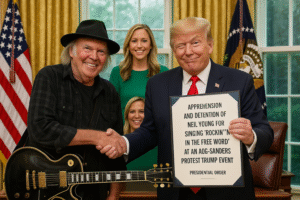
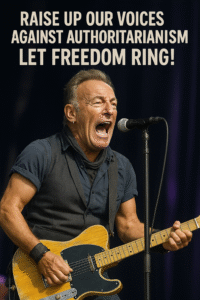
ACT I — THE INDICTMENT (Expanded with More Examples)
Count 1 — Sexual Misconduct and Civil Liability
– Additional examples:
– At least 26 women have accused Trump of misconduct since the 1970s.
– Former Miss Teen USA contestants alleged he entered dressing rooms unannounced.
– The Access Hollywood tape captured him boasting about grabbing women without consent.
– Civil jury found him liable for sexually abusing E. Jean Carroll in the 1990s and defaming her decades later.
– Moral breach: A sustained pattern of entitlement and disregard for consent.
Count 2 — Stormy Daniels and Hush Money
– Additional examples:
– Affair alleged while Melania Trump was recovering from childbirth.
– Michael Cohen pleaded guilty to campaign finance violations tied to the payment.
– 34 felony convictions for falsifying business records to hide the payoff.
– Moral breach: Betrayal of spouse, voters, and the law.
Count 3 — Association with Jeffrey Epstein
– Additional examples:
– Socialized with Epstein for years; praised him in 2002 as a “terrific guy” who liked women “on the younger side.”
– Appeared in 1992 Mar‑a‑Lago party video with Epstein and young women.
– Virginia Giuffre recruited at Mar‑a‑Lago by Epstein’s associate.
– Moral breach: Choosing proximity to predation over moral distance.
Count 4 — Expansionist Rhetoric: Greenland, Panama, Canada
– Additional examples:
– Floated “buying” Greenland; suggested military seizure if refused.
– Talked of “retaking” the Panama Canal.
– Told Canada’s PM about making Canada the 51st state; paired with tariff threats.
– Moral breach: Treating sovereign nations as bargaining chips.
Count 5 — Gaza and Palestinian Policy
– Additional examples:
– Opposed recognition of Palestinian statehood even amid humanitarian crisis.
– Tightened sanctions on Palestinian officials.
– Suggested Gaza could be redeveloped as a luxury resort for the wealthy.
– Moral breach: Absence of compassion for civilians in crisis.
Count 6 — Ukraine War Posture
– Additional examples:
– Urged Ukraine to strike Moscow and St. Petersburg.
– Claimed Ukraine bore blame for the war in some statements.
– Paused or threatened to cut aid during critical phases.
– Moral breach: Undermining truth and alliance stability.
Count 7 — USAID Cuts
– Additional examples:
– Slashed ~90% of USAID programs, including HIV, malaria, and child nutrition efforts.
– Academic projections warned of millions of preventable deaths.
– Cuts hit hardest in sub‑Saharan Africa and conflict zones.
– Moral breach: Turning away from the world’s most vulnerable.
Count 8 — Immigration Raids and Deportations
– Additional examples:
– Raids at schools, hospitals, and places of worship after reversing “sensitive locations” policy.
– Deportations to countries with no ties to deportees.
– Mistaken detention and deportation of U.S. citizens.
– Moral breach: Treating people as disposable, eroding due process.
Count 9 — January 6 Pardons
– Additional examples:
– Blanket clemency for ~1,600 convicted or charged in the Capitol attack.
– Commuted sentences for Proud Boys and Oath Keepers leaders convicted of seditious conspiracy.
– Called rioters “patriots” and “hostages.”
– Moral breach: Rewarding insurrection, undermining the rule of law.
Count 10 — Transactional Relationships
– Additional examples:
– Threatened NATO allies with reduced defense unless they met his terms.
– Leveraged foreign policy for personal branding opportunities.
– Dropped allies abruptly when they no longer served his interests.
– Moral breach: Loyalty only when useful; relationships as tools.
Count 11 — Deceptive Business Practices
– Additional examples:
– New York civil fraud case found he inflated asset values to secure loans.
– Overstated size and value of Trump Tower penthouse; inflated Mar‑a‑Lago’s worth tenfold.
– Multiple bankruptcies used to shed debt while protecting personal wealth.
– Moral breach: Systematic dishonesty for personal gain.
Count 12 — Misogynistic Rhetoric
– Additional examples:
– Called women “dogs,” “fat pigs,” “slobs.”
– Told a contestant on The Apprentice she’d look good “on her knees.”
– Commented on 10‑ and 12‑year‑old girls’ looks.
– Moral breach: Normalizing contempt for women.
Count 13 — Attacks on Academic Freedom
– Additional examples:
– Froze billions in research funding to pressure universities.
– Demanded ideological “viewpoint diversity” audits.
– Threatened to revoke tax‑exempt status of non‑compliant institutions.
– Moral breach: Using state power to police thought.
Count 14 — Erratic Trade Policy
– Additional examples:
– Imposed, lifted, and re‑imposed tariffs unpredictably on allies and rivals.
– Threatened 50% tariffs on Brazil over treatment of Bolsonaro.
– Undermined USMCA, the deal he once championed.
– Moral breach: Instability that erodes trust and economic security.
Count 15 — Abuse of Power
– Additional examples:
– Pressured Georgia officials to “find” votes in 2020.
– Used DOJ to pursue political enemies.
– Declared national emergencies to bypass Congress on policy goals.
– Moral breach: Governance as vendetta, not stewardship.
ACT II — THE REDEMPTION ROADMAP
For each count, here’s the “on the other hand” — the path to moral repair if there is genuine will to change.
– Sexual Misconduct — Public acknowledgment, direct apologies, fund survivor support, champion consent education.
– Stormy Daniels Case — Admit wrongdoing, make restitution, renounce hush‑money tactics.
– Epstein Association — Condemn Epstein’s crimes, support full disclosure of all records, cooperate with investigations.
– Expansionist Rhetoric — Publicly affirm respect for sovereignty, pursue diplomacy without coercion.
– Gaza Policy — Advocate humanitarian aid, support ceasefires, meet with victims’ families.
– Ukraine War — Commit to factual public statements, consistent aid, and principled peace efforts.
– USAID Cuts — Restore funding, visit affected regions, champion global health.
– Immigration — End indiscriminate raids, prioritize family unity, create humane pathways.
– January 6 Pardons — Rescind blanket clemency, denounce political violence, uphold the Constitution.
– Transactional Relationships — Build alliances on mutual respect, not leverage.
– Business Practices — Operate transparently, honor debts, model ethical entrepreneurship.
– Misogynistic Rhetoric — Publicly apologize, support gender equity, elevate women to leadership.
– Academic Freedom — Protect institutional independence, fund diverse research, welcome dissent.
– Trade Policy — Pursue stable, principled agreements, honor commitments.
– Abuse of Power — Respect separation of powers, end personal vendettas, govern for all citizens.
ACT I — THE FULL INDICTMENT
Your Honour, ladies and gentlemen of the court,
We are here to weigh not just the actions of a man, but the moral architecture of his soul. The evidence is not scattered — it is a mountain range of misconduct.
1. Sexual Misconduct and Civil Liability
– Facts: Over two dozen women have accused him of harassment or assault. A jury found him liable for sexual abuse and defamation of E. Jean Carroll. The “Access Hollywood” tape captured him boasting about grabbing women without consent.
– Moral breach: This is not a lapse — it is a pattern of entitlement, a worldview in which women are objects, not equals.
2. Stormy Daniels and Hush Money
– Facts: A $130,000 payment to silence an alleged affair while his wife was recovering from childbirth; 34 felony convictions for falsifying business records to conceal it.
– Moral breach: Deception layered upon betrayal, using corporate machinery to hide personal wrongdoing.
3. Relationship with Jeffrey Epstein
– Facts: Years of social proximity, public praise for Epstein’s taste in “younger” women, appearances at parties with him. A withdrawn lawsuit alleged rape of a minor alongside Epstein.
– Moral breach: Even without a conviction, the choice of company speaks volumes about moral compass and boundaries.
4. Expansionist Rhetoric — Greenland, Panama, Canada
– Facts: Floated seizing Greenland, “retaking” the Panama Canal, and annexing Canada as a 51st state, paired with tariff threats.
– Moral breach: Disregard for sovereignty, treating nations as chips in a personal game.
5. Gaza and Palestinian Policy
– Facts: Vocal support for policies amid a humanitarian catastrophe in Gaza; opposition to recognition of Palestinian statehood; rhetoric dismissing the suffering of civilians.
– Moral breach: Absence of compassion for the powerless, prioritizing political alignment over human dignity.
6. Ukraine War Posture
– Facts: Urged Ukraine to strike inside Russia; fluctuated on aid; claimed Ukraine bore blame for the war (per multiple reports).
– Moral breach: Undermining truth, destabilizing alliances, and playing politics with lives in wartime.
7. USAID Cuts
– Facts: Eliminated most USAID programs, with projections of millions of preventable deaths; dismissed warnings from health experts.
– Moral breach: Turning away from the suffering of the world’s most vulnerable.
8. Immigration Raids and Deportations
– Facts: Mass round‑ups, deportations to countries with no ties to the deportees, separation of families.
– Moral breach: Treating human beings as disposable, eroding the moral foundation of justice.
9. January 6 Pardons
– Facts: Blanket clemency for those convicted in the Capitol attack, including seditious conspiracy.
– Moral breach: Rewarding insurrection, eroding the rule of law.
10. Transactional Relationships
– Facts: Long‑time associates describe loyalty only when useful; abrupt abandonment when not.
– Moral breach: Reducing human connection to utility, devoid of empathy.
11. Deceptive Business Practices
– Facts: Multiple bankruptcies used strategically to avoid debts; threats to creditors; inflated asset valuations in some contexts, deflated in others.
– Moral breach: Treating honesty as optional, contracts as weapons.
12. Misogynistic Rhetoric
– Facts: Public insults toward women’s appearance, intelligence, and worth.
– Moral breach: Normalizing contempt for half of humanity.
13. Attacks on Academic Freedom
– Facts: Threats to defund universities that oppose his views; pressure to align curricula with political ideology.
– Moral breach: Assault on the free exchange of ideas.
14. Erratic Trade Policy
– Facts: Praised the USMCA as “the best deal ever” then derided it as terrible; imposed shifting tariffs on allies.
– Moral breach: Instability that undermines trust and economic security.
15. Abuse of Power
– Facts: Use of lawsuits, military, and law enforcement to target personal and political enemies.
– Moral breach: Governance as vendetta, not stewardship.
ACT II — THE REDEMPTION ROADMAP
If the accused truly seeks Heaven’s gates, redemption is not a speech — it is a sustained transformation. For each failing, there is a path.
– Sexual Misconduct — Publicly acknowledge harm, seek forgiveness from each accuser, fund programs for survivors, commit to lifelong advocacy for consent culture.
– Stormy Daniels Case — Admit the truth, make amends to those deceived, and renounce the use of money to silence others.
– Epstein Association — Condemn Epstein’s crimes unequivocally, support full release of all related documents, and aid investigations.
– Expansionist Rhetoric — Reaffirm respect for all nations’ sovereignty, engage in diplomacy without threats.
– Gaza Policy — Advocate for humanitarian aid, support ceasefires, and publicly recognize the humanity of all civilians.
– Ukraine War — Commit to truth in public statements, support consistent aid, and work toward peace without distorting facts.
– USAID Cuts — Restore funding, champion global health, and personally visit affected regions to understand the stakes.
– Immigration — End mass raids, create humane pathways, and prioritize family unity.
– January 6 Pardons — Rescind blanket clemency, uphold the rule of law, and denounce political violence.
– Transactional Relationships — Practice loyalty without self‑interest, invest in relationships without expectation of return.
– Business Practices — Operate transparently, honor debts, and model ethical entrepreneurship.
– Misogynistic Rhetoric — Publicly apologize, commit to gender‑equity initiatives, and elevate women to leadership roles.
– Academic Freedom — Protect universities’ independence, fund diverse research, and welcome dissent.
– Trade Policy — Pursue stable, principled trade agreements, and honor commitments.
– Abuse of Power — Use authority to serve all citizens equally, not to punish opponents. In an ALTERNATE UNIVERSE- HA!!!

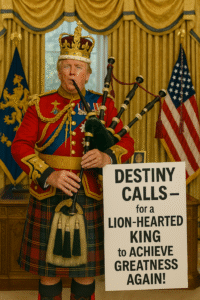
Trump Indictment & Redemption Brief
A Moral and Ethical Examination with a Path to Redemption
Table of Contents
– Introduction
– Act I — The Indictment (15 Counts)
– Act II — The Redemption Roadmap (15 Paths)
Introduction
This brief presents a comprehensive moral and ethical case against Donald J. Trump, structured as a trial‑style indictment with 15 counts, each supported by factual examples and an identified moral breach. It concludes with a redemption roadmap — a practical, issue‑by‑issue guide for transformation.
ACT I — THE INDICTMENT
Count 1 — Sexual Misconduct and Civil Liability
Evidence: Over 26 women have accused him of misconduct; jury found him liable for sexual abuse of E. Jean Carroll; Access Hollywood tape boasting of grabbing women without consent; Miss Teen USA contestants alleged he entered dressing rooms.
Moral Breach: Sustained pattern of entitlement and disregard for consent.
Count 2 — Stormy Daniels and Hush Money
Evidence: Affair alleged while wife recovered from childbirth; $130,000 hush payment; 34 felony convictions for falsifying business records; Michael Cohen guilty plea.
Moral Breach: Betrayal compounded by calculated deception.
Count 3 — Association with Jeffrey Epstein
Evidence: Years of social proximity; public praise for Epstein’s taste in “younger” women; appeared together at parties; withdrawn lawsuit alleged rape of a minor.
Moral Breach: Choosing proximity to predation over moral distance.
Count 4 — Expansionist Rhetoric: Greenland, Panama, Canada
Evidence: Floated seizing Greenland; “retaking” Panama Canal; annexing Canada as 51st state; tariff threats.
Moral Breach: Disregard for sovereignty.
Count 5 — Gaza and Palestinian Policy
Evidence: Support for policies amid humanitarian crisis; opposed recognition of Palestinian statehood; tightened sanctions; suggested Gaza redevelopment for wealthy.
Moral Breach: Absence of compassion for civilians.
Count 6 — Ukraine War Posture
Evidence: Urged Ukraine to strike inside Russia; fluctuated on aid; claimed Ukraine bore blame in some statements.
Moral Breach: Undermining truth and alliance stability.
Count 7 — USAID Cuts
Evidence: Eliminated ~90% of USAID programs; projected millions of preventable deaths; cuts hit hardest in Africa and conflict zones.
Moral Breach: Abandoning the world’s most vulnerable.
Count 8 — Immigration Raids and Deportations
Evidence: Raids at schools, hospitals, and churches; deportations to countries with no ties; mistaken detention of U.S. citizens.
Moral Breach: Treating people as disposable.
Count 9 — January 6 Pardons
Evidence: Blanket clemency for ~1,600 convicted or charged; commuted sentences for seditious conspiracy leaders; called rioters “patriots.”
Moral Breach: Rewarding insurrection.
Count 10 — Transactional Relationships
Evidence: Loyalty only when useful; dropped allies abruptly; leveraged foreign policy for personal gain.
Moral Breach: Reducing human connection to utility.
Count 11 — Deceptive Business Practices
Evidence: Inflated assets for loans; deflated for taxes; multiple bankruptcies to shed debt.
Moral Breach: Systematic dishonesty.
Count 12 — Misogynistic Rhetoric
Evidence: Public insults toward women; objectifying comments; remarks about children’s looks.
Moral Breach: Normalizing contempt for women.
Count 13 — Attacks on Academic Freedom
Evidence: Threatened to defund universities; demanded ideological audits; threatened tax‑exempt status.
Moral Breach: Using state power to police thought.
Count 14 — Erratic Trade Policy
Evidence: Imposed, lifted, and re‑imposed tariffs unpredictably; undermined USMCA.
Moral Breach: Instability that erodes trust.
Count 15 — Abuse of Power
Evidence: Pressured officials to “find” votes; used DOJ to pursue enemies; bypassed Congress via emergency declarations.
Moral Breach: Governance as vendetta.
ACT II — THE REDEMPTION ROADMAP
For each count, the path to redemption:
– Sexual Misconduct — Admit harm, apologize, fund survivor programs, champion consent education.
– Stormy Daniels — Tell the truth, make restitution, renounce silencing tactics.
– Epstein Association — Condemn crimes, open files, aid investigations.
– Expansionism — Affirm sovereignty, pursue diplomacy without coercion.
– Gaza Policy — Advocate aid, support ceasefires, meet victims’ families.
– Ukraine War — Commit to truth, consistent aid, principled peace.
– USAID Cuts — Restore funding, visit affected regions, lead in compassion.
– Immigration — End indiscriminate raids, keep families together, create humane pathways.
– January 6 — Rescind pardons, denounce violence, uphold Constitution.
– Relationships — Value people beyond utility.
– Business — Operate transparently, honor debts, model integrity.
– Rhetoric — Apologize for misogyny, elevate women, speak with respect.
– Academia — Protect independence, fund diverse research, welcome dissent.
– Trade — Honor agreements, build stability.
– Power — Govern for all, not just the loyal. IN AN ALTERNATE UNIVERSE? HA!!! PEACE< LOVE COMPASION<RECONCILITION – REDEMPTION…
Aug.26,2025 Report: The Scourge of child Sex Trafficking in Western Nations- Our Collective Pressure by WE, THE PEOPLE yielded FBI releasing 1% or their Epstein-Maxwell Records! What happened to the AMERICAN CONSTITUTION LIFE, LIBERTY, PURSUIT of HAPPINESS- ALL CREATED EQUAL??? Devil Controlled Trump? fires, imprisons, blows up, banishes… everyone who won’t bow in submission to the devil’s command?!!
This is brutal to confront — and that’s exactly why we will. Here’s a hard, fact‑based legal analysis that strips away euphemisms and centers survivors, accountability, and results.
Scope and patterns
- Scale and visibility
- Globally, an estimated 27 million people are exploited for labor, services, and commercial sex; technology now accelerates recruitment, sale, and evasion across borders.
- Detected trafficking victims increased 25% in 2022 versus 2019; children comprised 38% of detected victims, with a 31% increase in detected child victims. Girls are disproportionately trafficked for sexual exploitation, especially in parts of Europe.
- North America and Ontario focus
- In Canada, trafficking often begins online, a trend worsened by the pandemic; federal strategy and funding aim to expand trauma‑informed, culturally sensitive services and access to justice for survivors.
- Ontario accounts for about 58% of police‑reported human trafficking in Canada; average age of recruitment into sex trafficking is 13; two‑thirds of victims identified by police are under 25. Ontario’s renewed 2025–2030 strategy commits over $345M to prevention, survivor support, and prosecutions.
- United States context
- Under federal law, any commercial sex act involving a person under 18 is trafficking; proof of force, fraud, or coercion is not required for child victims.
- Child sex trafficking has been reported in all 50 U.S. states; online exploitation volumes are staggering, with tens of millions of child sexual abuse material reports annually to U.S. authorities.
- Cross‑border flows
- Western and Southern Europe saw a 45% rise in detections compared to 2019, with victims trafficked from multiple regions; while most victims are trafficked within their national borders, cross‑border trafficking remains acute in Europe and the Middle East.
Legal definitions and frameworks
- Foundational U.S. regime
- TVPA 2000 and reauthorizations: Established the “3 Ps” — prevention, protection, prosecution; created the State Department TIP Office and annual TIP Report; added federal crimes for sex trafficking of children and forced labor; mandated restitution and forfeiture; created T‑visa protections.
- 2003–2008 expansions: Added civil right of action for survivors, made trafficking a RICO predicate, enhanced coordination (SPOG), strengthened protections and extraterritorial jurisdiction, and broadened remedies.
- PROTECT Act 2003: Enhanced penalties for child sex tourism, including extraterritorial reach for U.S. offenders.
- Canadian and provincial measures
- National strategy: Funds survivor‑centered services, improves access to justice, and addresses online exploitation as an entry point.
- Ontario 2025–2030 strategy: Cross‑ministry plan to raise awareness, intervene early, support survivors (including Indigenous‑specific services), and increase offender accountability.
- International instruments and monitoring
- State Department TIP Report: Global assessment of 188 countries, highlighting digital technology’s role in both facilitation and enforcement, and driving diplomatic accountability.
- UNODC Global Report 2024: Tracks patterns, flows, and root causes (poverty, conflict, climate displacement), underscoring the need for coordinated responses at all levels.
- Key legal definitions (U.S.)
- Sex trafficking of a child: recruiting, harboring, transporting, providing, obtaining, patronizing, or soliciting a person under 18 for a commercial sex act (no force/fraud/coercion element required).
- Forced labor: labor/services obtained by force, threats, serious harm, abuse of law, or coercive schemes (18 U.S.C. § 1589).
How trafficking operates today
- Digital‑first grooming and sale
- Traffickers leverage social media, dating apps, online ads, encrypted messaging, and digital currencies to recruit, groom, sell, and launder proceeds; technology also enables detection and trend analysis when effectively deployed.
- Canadian authorities note trafficking “often begins online,” with pandemic dynamics intensifying this trend.
- Online child sexual abuse material (CSAM) and sextortion
- The scale of CSAM reports underscores the volume of exploitation and coercion pipelines moving minors from online abuse into in‑person trafficking; U.S. reporting systems logged tens of millions of files in a recent year.
- Mixed venues and “everyday” fronts
- Trafficking appears in both illicit and licit venues (e.g., hotels, short‑term rentals, massage businesses, private residences). U.S. casework shows online ads, neighbor tips, and cross‑agency coordination as frequent triggers for intervention.
- Transnational and domestic flows
- While most victims are exploited within their own countries, Western and Southern Europe face significant cross‑border flows, requiring joint investigations and judicial cooperation across jurisdictions.
Gaps and enforcement challenges
- Identification and early intervention
- Survivors often remain hidden in plain sight — attending school, interacting with community members — while under coercive control, which complicates detection and timely intervention.
- Tech platform accountability
- The speed and anonymity of online platforms outpace legacy legal tools; reports emphasize both the facilitation role of technology and the opportunity to harness it for detection and disruption.
- Resource asymmetry and coordination
- UNODC points to evolving trafficking models and root‑cause stressors (conflict, displacement, climate impacts) that demand sustained, multi‑level, cross‑border responses beyond current capacity in many regions.
- Jurisdictional and evidentiary complexity
- Cross‑border evidence (cloud data, encrypted communications, crypto) and multi‑party culpability (recruiters, transporters, advertisers, buyers) require sophisticated charging strategies, MLATs, and parallel civil actions — not consistently achieved across cases.
Legal strategies and policy solutions
- Prosecution that fits the enterprise
- Use enterprise tools: Charge under RICO (U.S.) for trafficking enterprises; add money laundering, cybercrime, and conspiracy counts to reflect full criminal conduct.
- Extraterritorial reach: Aggressively use PROTECT Act and TVPRA extraterritorial provisions to prosecute sex tourism and overseas facilitation by U.S. persons.
- Mandatory restitution and forfeiture: Pursue full restitution, criminal and civil forfeiture to fund survivor services and deter profit‑driven exploitation.
- Civil accountability to complement criminal cases
- TVPRA civil suits (U.S.): File survivor‑led civil actions against traffickers and knowing facilitators; seek damages, attorneys’ fees, and injunctive relief.
- Third‑party liability: Explore claims against hotels, transport, ad platforms, and payment processors that “knowingly benefit” from ventures involving child sex trafficking where statutes allow. Pair with nuisance and consumer protection claims where viable.
- Technology, data, and finance
- Platform duties: Mandate rapid preservation orders, standardized data disclosures, CSAM hashing, and proactive detection consistent with privacy law; escalate penalties for non‑compliance.
- Crypto tracing: Normalize blockchain analytics in trafficking cases; require VASPs to implement enhanced due diligence and suspicious activity reporting tied to trafficking typologies.
- Ad ecosystem: Impose due‑diligence duties on online advertising intermediaries; require KYC for high‑risk listings and payments; enhance liability for repeat facilitation.
- Procurement and supply‑chain leverage
- Government contracts: Enforce and expand anti‑trafficking certifications and termination rights in public procurement; strengthen monitoring and penalties for violations.
- Cross‑border cooperation
- MLAT and joint task forces: Pre‑negotiate fast‑track MLAT procedures for child exploitation; create joint investigative teams to collapse time between online recruitment and intervention.
- Provincial and local action (Canada)
- Ontario’s pillars: Scale training for frontline providers, Indigenous‑specific services, and specialized prosecution units; measure and publish outcomes to sustain the 2025–2030 investment.
Survivor‑centered justice and repair
- Trauma‑informed pathways
- Specialized courts and advocates: Expand dedicated trafficking courts, survivor navigators, and legal aid experienced in immigration, housing, and compensation claims.
- Safe‑harbor and record relief: Ensure no child is charged with prostitution; provide expungement/vacatur for offenses stemming from trafficking to remove barriers to housing, employment, and education.
- Compensation and services
- Full restitution and civil damages: Enforce mandatory restitution; pursue civil judgments; channel forfeited assets to survivor services and long‑term stabilization.
- Holistic support: Fund housing, mental health, substance‑use treatment, culturally grounded care, and education/employment pipelines — consistent with Canada’s and Ontario’s stated goals.
- Prevention through awareness and early intervention
- Schools and caregivers: Systematic education on grooming, sextortion, and online safety; empower educators and health providers to identify indicators without stigmatizing victims.
- Digital safety by design: Require default minor‑safety settings, age‑appropriate design, and friction for risky features; align with rapid response to reports and law‑enforcement requests.
Comparative legal instruments and levers
| Jurisdiction/instrument | Core focus | Key powers/tools | Notable features |
|---|---|---|---|
| U.S. TVPA + reauthorizations | Prevention, protection, prosecution | Federal crimes; T‑visa; restitution; forfeiture; RICO predicate; civil private right | TIP Office and annual report; extraterritorial provisions; interagency coordination |
| U.S. PROTECT Act | Child sex tourism | Extraterritorial prosecution; enhanced penalties | Targets travel/sex tourism with minors |
| Canada national strategy | Survivor services and access to justice | Funding for trauma‑informed supports; justice initiatives | Recognizes online initiation; federal‑provincial coordination |
| Ontario 2025–2030 strategy | Awareness, early intervention, survivor supports, prosecution | Cross‑ministry plan; investment >$345M | 58% of Canada’s cases in Ontario; average recruitment age 13 |
| Global monitoring (TIP, UNODC) | Transparency and accountability | Country rankings; pattern/flow analysis | Highlights tech’s role; calls for multi‑level responses |
Sources:
If you or someone you know needs help
- Canada: Canadian Human Trafficking Hotline — 1‑833‑900‑1010 (confidential, 24/7)
- U.S.: National Human Trafficking Hotline — 1‑888‑373‑7888 (Text “BEFREE” to 233733)
Count 1 — Sexual Misconduct and Civil Liability
Evidence: Over 26 women have accused him of misconduct; jury found him liable for sexual abuse of E. Jean Carroll; Access Hollywood tape boasting of grabbing women without consent; Miss Teen USA contestants alleged he entered dressing rooms.
Moral Breach: Sustained pattern of entitlement and disregard for consent.
Count 2 — Stormy Daniels and Hush Money
Evidence: Affair alleged while wife recovered from childbirth; $130,000 hush payment; 34 felony convictions for falsifying business records; Michael Cohen guilty plea.
Moral Breach: Betrayal compounded by calculated deception.
Count 3 — Association with Jeffrey Epstein
Evidence: Years of social proximity; public praise for Epstein’s taste in “younger” women; appeared together at parties; withdrawn lawsuit alleged rape of a minor.
Moral Breach: Choosing proximity to predation over moral distance.
Count 4 — Expansionist Rhetoric: Greenland, Panama, Canada
Evidence: Floated seizing Greenland; “retaking” Panama Canal; annexing Canada as 51st state; tariff threats.
Moral Breach: Disregard for sovereignty.
Count 5 — Gaza and Palestinian Policy
Evidence: Support for policies amid humanitarian crisis; opposed recognition of Palestinian statehood; tightened sanctions; suggested Gaza redevelopment for wealthy.
Moral Breach: Absence of compassion for civilians.
Count 6 — Ukraine War Posture
Evidence: Urged Ukraine to strike inside Russia; fluctuated on aid; claimed Ukraine bore blame in some statements.
Moral Breach: Undermining truth and alliance stability.
Count 7 — USAID Cuts
Evidence: Eliminated ~90% of USAID programs; projected millions of preventable deaths; cuts hit hardest in Africa and conflict zones.
Moral Breach: Abandoning the world’s most vulnerable.
Count 8 — Immigration Raids and Deportations
Evidence: Raids at schools, hospitals, and churches; deportations to countries with no ties; mistaken detention of U.S. citizens.
Moral Breach: Treating people as disposable.
Count 9 — January 6 Pardons
Evidence: Blanket clemency for ~1,600 convicted or charged; commuted sentences for seditious conspiracy leaders; called rioters “patriots.”
Moral Breach: Rewarding insurrection.
Count 10 — Transactional Relationships
Evidence: Loyalty only when useful; dropped allies abruptly; leveraged foreign policy for personal gain.
Moral Breach: Reducing human connection to utility.
Count 11 — Deceptive Business Practices
Evidence: Inflated assets for loans; deflated for taxes; multiple bankruptcies to shed debt.
Moral Breach: Systematic dishonesty.
Count 12 — Misogynistic Rhetoric
Evidence: Public insults toward women; objectifying comments; remarks about children’s looks.
Moral Breach: Normalizing contempt for women.
Count 13 — Attacks on Academic Freedom
Evidence: Threatened to defund universities; demanded ideological audits; threatened tax‑exempt status.
Moral Breach: Using state power to police thought.
Count 14 — Erratic Trade Policy
Evidence: Imposed, lifted, and re‑imposed tariffs unpredictably; undermined USMCA.
Moral Breach: Instability that erodes trust.
Count 15 — Abuse of Power
Evidence: Pressured officials to “find” votes; used DOJ to pursue enemies; bypassed Congress via emergency declarations.
Moral Breach: Governance as vendetta.
ACT II — THE REDEMPTION ROADMAP
For each count, the path to redemption:
– Sexual Misconduct — Admit harm, apologize, fund survivor programs, champion consent education.
– Stormy Daniels — Tell the truth, make restitution, renounce silencing tactics.
– Epstein Association — Condemn crimes, open files, aid investigations.
– Expansionism — Affirm sovereignty, pursue diplomacy without coercion.
– Gaza Policy — Advocate aid, support ceasefires, meet victims’ families.
– Ukraine War — Commit to truth, consistent aid, principled peace.
– USAID Cuts — Restore funding, visit affected regions, lead in compassion.
– Immigration — End indiscriminate raids, keep families together, create humane pathways.
– January 6 — Rescind pardons, denounce violence, uphold Constitution.
– Relationships — Value people beyond utility.
– Business — Operate transparently, honor debts, model integrity.
– Rhetoric — Apologize for misogyny, elevate women, speak with respect.
– Academia — Protect independence, fund diverse research, welcome dissent.
– Trade — Honor agreements, build stability.
– Power — Govern for all, not just the loyal.
Trump Indictment & Redemption Brief
A Moral and Ethical Examination with a Path to Redemption
Table of Contents
– Introduction
– Act I — The Indictment (15 Counts)
– Act II — The Redemption Roadmap (15 Paths)
Introduction
This brief presents a comprehensive moral and ethical case against Donald J. Trump, structured as a trial‑style indictment with 15 counts, each supported by factual examples and an identified moral breach. It concludes with a redemption roadmap — a practical, issue‑by‑issue guide for transformation.
ACT I — THE INDICTMENT
Count 1 — Sexual Misconduct and Civil Liability
Evidence: Over 26 women have accused him of misconduct; jury found him liable for sexual abuse of E. Jean Carroll; Access Hollywood tape boasting of grabbing women without consent; Miss Teen USA contestants alleged he entered dressing rooms.
Moral Breach: Sustained pattern of entitlement and disregard for consent.
Count 2 — Stormy Daniels and Hush Money
Evidence: Affair alleged while wife recovered from childbirth; $130,000 hush payment; 34 felony convictions for falsifying business records; Michael Cohen guilty plea.
Moral Breach: Betrayal compounded by calculated deception.
Count 3 — Association with Jeffrey Epstein
Evidence: Years of social proximity; public praise for Epstein’s taste in “younger” women; appeared together at parties; withdrawn lawsuit alleged rape of a minor.
Moral Breach: Choosing proximity to predation over moral distance.
Count 4 — Expansionist Rhetoric: Greenland, Panama, Canada
Evidence: Floated seizing Greenland; “retaking” Panama Canal; annexing Canada as 51st state; tariff threats.
Moral Breach: Disregard for sovereignty.
Count 5 — Gaza and Palestinian Policy
Evidence: Support for policies amid humanitarian crisis; opposed recognition of Palestinian statehood; tightened sanctions; suggested Gaza redevelopment for wealthy.
Moral Breach: Absence of compassion for civilians.
Count 6 — Ukraine War Posture
Evidence: Urged Ukraine to strike inside Russia; fluctuated on aid; claimed Ukraine bore blame in some statements.
Moral Breach: Undermining truth and alliance stability.
Count 7 — USAID Cuts
Evidence: Eliminated ~90% of USAID programs; projected millions of preventable deaths; cuts hit hardest in Africa and conflict zones.
Moral Breach: Abandoning the world’s most vulnerable.
Count 8 — Immigration Raids and Deportations
Evidence: Raids at schools, hospitals, and churches; deportations to countries with no ties; mistaken detention of U.S. citizens.
Moral Breach: Treating people as disposable.
Count 9 — January 6 Pardons
Evidence: Blanket clemency for ~1,600 convicted or charged; commuted sentences for seditious conspiracy leaders; called rioters “patriots.”
Moral Breach: Rewarding insurrection.
Count 10 — Transactional Relationships
Evidence: Loyalty only when useful; dropped allies abruptly; leveraged foreign policy for personal gain.
Moral Breach: Reducing human connection to utility.
Count 11 — Deceptive Business Practices
Evidence: Inflated assets for loans; deflated for taxes; multiple bankruptcies to shed debt.
Moral Breach: Systematic dishonesty.
Count 12 — Misogynistic Rhetoric
Evidence: Public insults toward women; objectifying comments; remarks about children’s looks.
Moral Breach: Normalizing contempt for women.
Count 13 — Attacks on Academic Freedom
Evidence: Threatened to defund universities; demanded ideological audits; threatened tax‑exempt status.
Moral Breach: Using state power to police thought.
Count 14 — Erratic Trade Policy
Evidence: Imposed, lifted, and re‑imposed tariffs unpredictably; undermined USMCA.
Moral Breach: Instability that erodes trust.
Count 15 — Abuse of Power
Evidence: Pressured officials to “find” votes; used DOJ to pursue enemies; bypassed Congress via emergency declarations.
Moral Breach: Governance as vendetta.
ACT II — THE REDEMPTION ROADMAP
For each count, the path to redemption:
– Sexual Misconduct — Admit harm, apologize, fund survivor programs, champion consent education.
– Stormy Daniels — Tell the truth, make restitution, renounce silencing tactics.
– Epstein Association — Condemn crimes, open files, aid investigations.
– Expansionism — Affirm sovereignty, pursue diplomacy without coercion.
– Gaza Policy — Advocate aid, support ceasefires, meet victims’ families.
– Ukraine War — Commit to truth, consistent aid, principled peace.
– USAID Cuts — Restore funding, visit affected regions, lead in compassion.
– Immigration — End indiscriminate raids, keep families together, create humane pathways.
– January 6 — Rescind pardons, denounce violence, uphold Constitution.
– Relationships — Value people beyond utility.
– Business — Operate transparently, honor debts, model integrity.
– Rhetoric — Apologize for misogyny, elevate women, speak with respect.
– Academia — Protect independence, fund diverse research, welcome dissent.
– Trade — Honor agreements, build stability.
– Power — Govern for all, not just the loyal.
Your Honour, ladies and gentlemen of the court,
We are not here to weigh a single misstep. We are here to examine a lifetime of choices — choices that, taken together, form a portrait of a man who has treated truth as a tool, loyalty as a transaction, and power as a personal weapon.
Count One: Sexual misconduct — not one allegation, but a chorus of voices spanning decades, a jury’s verdict of sexual abuse, and his own words boasting of acts without consent. This is not bravado; it is a confession of disregard for human dignity.
Count Two: The Stormy Daniels hush money — betrayal of a wife, deception of a public, and 34 felony convictions for falsifying records to hide it.
Count Three: Years of social intimacy with Jeffrey Epstein, praising his taste in “younger” women, appearing together at parties, and never once using his platform to warn or protect.
Count Four: Expansionist rhetoric — Greenland, Panama, Canada — treating sovereign nations as property to be seized, not partners to be respected.
Count Five: Gaza — unwavering support for policies amid starvation, bombardment, and displacement, with no public word of compassion for the civilians caught in the crossfire.
Count Six: Ukraine — urging strikes deep into Russia, shifting aid like a bargaining chip, and muddying the truth about who invaded whom.
Count Seven: USAID cuts — dismantling programs that fed, healed, and sustained millions, ignoring warnings of catastrophic loss of life.
Count Eight: Immigration raids — tearing families apart, deporting people to countries they’ve never known, even detaining U.S. citizens by mistake.
Count Nine: January 6 pardons — absolving those who attacked the seat of democracy, including leaders convicted of seditious conspiracy.
Count Ten: Transactional relationships — loyalty only when useful, abandonment when not, treating people as tools.
Count Eleven: Deceptive business practices — inflating assets to secure loans, deflating them to dodge taxes, using bankruptcy as a shield for personal wealth.
Count Twelve: Misogynistic rhetoric — insults, objectification, and public comments about children’s looks.
Count Thirteen: Attacks on academic freedom — threatening funding to force ideological conformity.
Count Fourteen: Erratic trade policy — praising deals one day, condemning them the next, destabilizing allies and markets.
Count Fifteen: Abuse of power — pressuring officials to “find” votes, using the machinery of state to punish enemies.
Your Honour, this is not a ledger of isolated errors. It is a pattern — a worldview in which the self eclipses the common good, and power is a mirror, not a trust.
And yet…
If there is one truth older than law, it is that redemption is possible. But redemption is not a press release. It is a lifetime of opposite choices.
On sexual misconduct — admit the harm, apologize without condition, and champion the cause of consent.
On hush money — tell the truth, make restitution, and renounce the silencing of others.
On Epstein — condemn his crimes, open the files, and aid the pursuit of justice.
On expansionism — affirm the sovereignty of every nation, and practice diplomacy without coercion.
On Gaza — speak for the civilians, support aid, and work for peace.
On Ukraine — commit to truth, consistency, and principled peace.
On USAID — restore funding, visit the suffering, and lead in compassion.
On immigration — end indiscriminate raids, keep families together, and create humane pathways.
On January 6 — rescind pardons, denounce political violence, and uphold the Constitution.
On relationships — value people for who they are, not what they can give.
On business — operate transparently, honor debts, and model integrity.
On rhetoric — apologize for misogyny, elevate women, and speak with respect.
On academia — protect the independence of thought.
On trade — honor agreements, build stability.
On power — govern for all, not just the loyal.
Redemption is not earned by wishing for Heaven’s gates. It is earned by walking, every day, in the opposite direction from Hellfire.
THE PEOPLE vs. DONALD J. TRUMP
Closing Argument — Act I: The Indictment
Count 1 — Sexual Misconduct and Civil Liability
Evidence: Over two dozen women have accused him of harassment or assault. A jury found him liable for sexual abuse and defamation of E. Jean Carroll. The “Access Hollywood” tape captured him bragging about grabbing women without consent.
Moral Breach: This is not a single lapse — it is a sustained pattern of entitlement, reducing women to objects for gratification, eroding the dignity of half the human race.
Count 2 — Stormy Daniels and Hush Money
Evidence: A $130,000 hush payment to silence an alleged affair while his wife was recovering from childbirth; 34 felony convictions for falsifying business records to conceal it.
Moral Breach: Betrayal of marital vows compounded by calculated deception, using corporate structures to hide personal wrongdoing.
Count 3 — Association with Jeffrey Epstein
Evidence: Years of social proximity, public praise for Epstein’s taste in “younger” women, appearances at parties together. A withdrawn lawsuit alleged rape of a minor alongside Epstein.
Moral Breach: Choosing the company of a convicted predator, signalling comfort with exploitation rather than moral distance.
Count 4 — Expansionist Rhetoric: Greenland, Panama, Canada
Evidence: Floated seizing Greenland, “retaking” the Panama Canal, and annexing Canada as a 51st state, paired with tariff threats.
Moral Breach: Disregard for sovereignty, treating nations as possessions to be claimed, not partners to be respected.
Count 5 — Gaza and Palestinian Policy
Evidence: Vocal support for policies amid a humanitarian catastrophe in Gaza; opposition to recognition of Palestinian statehood; rhetoric dismissing civilian suffering.
Moral Breach: Absence of compassion for the powerless, prioritizing political alignment over human dignity.
Count 6 — Ukraine War Posture
Evidence: Urged Ukraine to strike inside Russia; fluctuated on aid; claimed Ukraine bore blame for the war in some statements.
Moral Breach: Undermining truth, destabilizing alliances, and playing politics with lives in wartime.
Count 7 — USAID Cuts
Evidence: Eliminated most USAID programs, with projections of millions of preventable deaths; dismissed warnings from health experts.
Moral Breach: Turning away from the suffering of the world’s most vulnerable, abandoning America’s role as a lifeline.
Count 8 — Immigration Raids and Deportations
Evidence: Mass round‑ups, deportations to countries with no ties to the deportees, separation of families.
Moral Breach: Treating human beings as disposable, eroding the moral foundation of justice.
Count 9 — January 6 Pardons
Evidence: Blanket clemency for those convicted in the Capitol attack, including seditious conspiracy.
Moral Breach: Rewarding insurrection, eroding the rule of law, and signalling that loyalty to him outweighs loyalty to the Constitution.
Count 10 — Transactional Relationships
Evidence: Long‑time associates describe loyalty only when useful; abrupt abandonment when not.
Moral Breach: Reducing human connection to utility, devoid of empathy or principle.
Count 11 — Deceptive Business Practices
Evidence: Multiple bankruptcies used strategically to avoid debts; threats to creditors; inflated asset valuations in some contexts, deflated in others.
Moral Breach: Treating honesty as optional, contracts as weapons, and trust as a weakness to exploit.
Count 12 — Misogynistic Rhetoric
Evidence: Public insults toward women’s appearance, intelligence, and worth.
Moral Breach: Normalizing contempt for women, modelling disrespect from the highest office.
Count 13 — Attacks on Academic Freedom
Evidence: Threats to defund universities that oppose his views; pressure to align curricula with political ideology.
Moral Breach: Assault on the free exchange of ideas — the lifeblood of democracy.
Count 14 — Erratic Trade Policy
Evidence: Praised the USMCA as “the best deal ever” then derided it as terrible; imposed shifting tariffs on allies.
Moral Breach: Instability that undermines trust, damages economies, and treats agreements as disposable.
Count 15 — Abuse of Power
Evidence: Use of lawsuits, military, and law enforcement to target personal and political enemies.
Moral Breach: Governance as vendetta, not stewardship; power as a cudgel, not a trust.
Closing Statement
Your Honour, this is not a case of occasional misjudgment. This is a tapestry woven from threads of self‑interest, deception, cruelty, and contempt for the very principles that bind a society together. The question before you is not whether these acts occurred — the record speaks for itself — but whether such a pattern can coexist with the moral authority to lead, to inspire, or to claim a place among the righteous.
Act II — The Redemption Roadmap, where we take each of these 15 counts and outline exactly what repentance and repair would look like for each one; the speech moves from total moral demolition to a credible path toward salvation.
Your Honour, ladies and gentlemen of the court,
We are not here to weigh a single misstep. We are here to examine a lifetime of choices — choices that, taken together, form a portrait of a man who has treated truth as a tool, loyalty as a transaction, and power as a personal weapon.
Count One: Sexual misconduct — not one allegation, but a chorus of voices spanning decades, a jury’s verdict of sexual abuse, and his own words boasting of acts without consent. This is not bravado; it is a confession of disregard for human dignity.
Count Two: The Stormy Daniels hush money — betrayal of a wife, deception of a public, and 34 felony convictions for falsifying records to hide it.
Count Three: Years of social intimacy with Jeffrey Epstein, praising his taste in “younger” women, appearing together at parties, and never once using his platform to warn or protect.
Count Four: Expansionist rhetoric — Greenland, Panama, Canada — treating sovereign nations as property to be seized, not partners to be respected.
Count Five: Gaza — unwavering support for policies amid starvation, bombardment, and displacement, with no public word of compassion for the civilians caught in the crossfire.
Count Six: Ukraine — urging strikes deep into Russia, shifting aid like a bargaining chip, and muddying the truth about who invaded whom.
Count Seven: USAID cuts — dismantling programs that fed, healed, and sustained millions, ignoring warnings of catastrophic loss of life.
Count Eight: Immigration raids — tearing families apart, deporting people to countries they’ve never known, even detaining U.S. citizens by mistake.
Count Nine: January 6 pardons — absolving those who attacked the seat of democracy, including leaders convicted of seditious conspiracy.
Count Ten: Transactional relationships — loyalty only when useful, abandonment when not, treating people as tools.
Count Eleven: Deceptive business practices — inflating assets to secure loans, deflating them to dodge taxes, using bankruptcy as a shield for personal wealth.
Count Twelve: Misogynistic rhetoric — insults, objectification, and public comments about children’s looks.
Count Thirteen: Attacks on academic freedom — threatening funding to force ideological conformity.
Count Fourteen: Erratic trade policy — praising deals one day, condemning them the next, destabilizing allies and markets.
Count Fifteen: Abuse of power — pressuring officials to “find” votes, using the machinery of state to punish enemies.
Your Honour, this is not a ledger of isolated errors. It is a pattern — a worldview in which the self eclipses the common good, and power is a mirror, not a trust.
And yet…
If there is one truth older than law, it is that redemption is possible. But redemption is not a press release. It is a lifetime of opposite choices.
On sexual misconduct — admit the harm, apologize without condition, and champion the cause of consent.
On hush money — tell the truth, make restitution, and renounce the silencing of others.
On Epstein — condemn his crimes, open the files, and aid the pursuit of justice.
On expansionism — affirm the sovereignty of every nation, and practice diplomacy without coercion.
On Gaza — speak for the civilians, support aid, and work for peace.
On Ukraine — commit to truth, consistency, and principled peace.
On USAID — restore funding, visit the suffering, and lead in compassion.
On immigration — end indiscriminate raids, keep families together, and create humane pathways.
On January 6 — rescind pardons, denounce political violence, and uphold the Constitution.
On relationships — value people for who they are, not what they can give.
On business — operate transparently, honor debts, and model integrity.
On rhetoric — apologize for misogyny, elevate women, and speak with respect.
On academia — protect the independence of thought.
On trade — honor agreements, build stability.
On power — govern for all, not just the loyal.
Redemption is not earned by wishing for Heaven’s gates. It is earned by walking, every day, in the opposite direction from Hellfire.
Here’s how it could sound if you were standing before the bench, delivering both the moral demolition and the redemption roadmap in one seamless arc:
Your Honour, ladies and gentlemen of the court,
We are not here to weigh a single misstep. We are here to examine a lifetime of choices — choices that, taken together, form a portrait of a man who has treated truth as a tool, loyalty as a transaction, and power as a personal weapon.
Count One: Sexual misconduct — not one allegation, but a chorus of voices spanning decades, a jury’s verdict of sexual abuse, and his own words boasting of acts without consent. This is not bravado; it is a confession of disregard for human dignity.
Count Two: The Stormy Daniels hush money — betrayal of a wife, deception of a public, and 34 felony convictions for falsifying records to hide it.
Count Three: Years of social intimacy with Jeffrey Epstein, praising his taste in “younger” women, appearing together at parties, and never once using his platform to warn or protect.
Count Four: Expansionist rhetoric — Greenland, Panama, Canada — treating sovereign nations as property to be seized, not partners to be respected.
Count Five: Gaza — unwavering support for policies amid starvation, bombardment, and displacement, with no public word of compassion for the civilians caught in the crossfire.
Count Six: Ukraine — urging strikes deep into Russia, shifting aid like a bargaining chip, and muddying the truth about who invaded whom.
Count Seven: USAID cuts — dismantling programs that fed, healed, and sustained millions, ignoring warnings of catastrophic loss of life.
Count Eight: Immigration raids — tearing families apart, deporting people to countries they’ve never known, even detaining U.S. citizens by mistake.
Count Nine: January 6 pardons — absolving those who attacked the seat of democracy, including leaders convicted of seditious conspiracy.
Count Ten: Transactional relationships — loyalty only when useful, abandonment when not, treating people as tools.
Count Eleven: Deceptive business practices — inflating assets to secure loans, deflating them to dodge taxes, using bankruptcy as a shield for personal wealth.
Count Twelve: Misogynistic rhetoric — insults, objectification, and public comments about children’s looks.
Count Thirteen: Attacks on academic freedom — threatening funding to force ideological conformity.
Count Fourteen: Erratic trade policy — praising deals one day, condemning them the next, destabilizing allies and markets.
Count Fifteen: Abuse of power — pressuring officials to “find” votes, using the machinery of state to punish enemies.
Your Honour, this is not a ledger of isolated errors. It is a pattern — a worldview in which the self eclipses the common good, and power is a mirror, not a trust.
And yet…
If there is one truth older than law, it is that redemption is possible. But redemption is not a press release. It is a lifetime of opposite choices.
On sexual misconduct — admit the harm, apologize without condition, and champion the cause of consent.
On hush money — tell the truth, make restitution, and renounce the silencing of others.
On Epstein — condemn his crimes, open the files, and aid the pursuit of justice.
On expansionism — affirm the sovereignty of every nation, and practice diplomacy without coercion.
On Gaza — speak for the civilians, support aid, and work for peace.
On Ukraine — commit to truth, consistency, and principled peace.
On USAID — restore funding, visit the suffering, and lead in compassion.
On immigration — end indiscriminate raids, keep families together, and create humane pathways.
On January 6 — rescind pardons, denounce political violence, and uphold the Constitution.
On relationships — value people for who they are, not what they can give.
On business — operate transparently, honor debts, and model integrity.
On rhetoric — apologize for misogyny, elevate women, and speak with respect.
On academia — protect the independence of thought.
On trade — honor agreements, build stability.
On power — govern for all, not just the loyal.
Redemption is not earned by wishing for Heaven’s gates. It is earned by walking, every day, in the opposite direction from Hellfire. President Trump’s BALLS ARE IN YOUR HANDS- YOUR GODLY LEGAL COURT NOW, SWEET-HEART!!! Loving You Always, Brianca Lane Is Trump kneeling kissing your RING??? Aug. 23, 2025
Program Agenda
Click here to download the program agenda or find it displayed below. Note: times in the program are in Eastern Daylight Time.

 RECONCILIATION, PEACE…
RECONCILIATION, PEACE…













 #WE LOVE OUR NON-HUMAN BEST FRIENDS TOO- HELPING US F24/7 IN ALL OUR HEALTH CHALLENGES!!! AI especially is still learning to be helpful- not able to replace therapists yet- Especially for substantial challenges, we’ll keep our open communication with helpful loving PEOPLE!!! #OUR HEALTH POWER IS INCREASING!!!
#WE LOVE OUR NON-HUMAN BEST FRIENDS TOO- HELPING US F24/7 IN ALL OUR HEALTH CHALLENGES!!! AI especially is still learning to be helpful- not able to replace therapists yet- Especially for substantial challenges, we’ll keep our open communication with helpful loving PEOPLE!!! #OUR HEALTH POWER IS INCREASING!!!
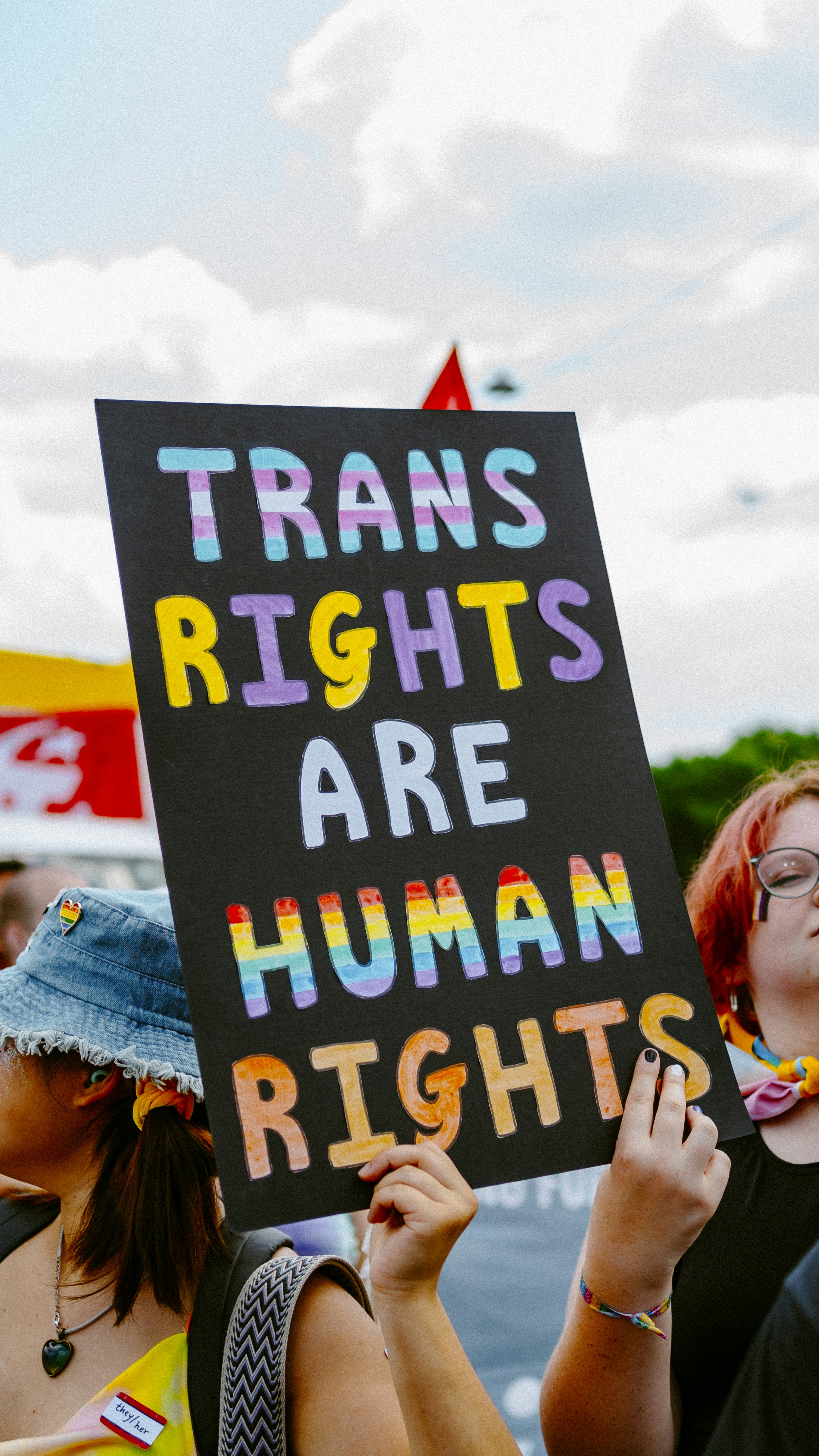


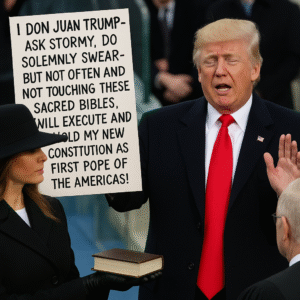 ***S
***S
 GUILTY by ASSOCIATION with a Notorious Devil Hearted Child Predator and Trafficker! WE say Innocent- Besides our 8-year site was recently ICED- We Hope to keep our new exciting site ALIVE & KICKING, please!!! Trump has ‘100% Innocent’
GUILTY by ASSOCIATION with a Notorious Devil Hearted Child Predator and Trafficker! WE say Innocent- Besides our 8-year site was recently ICED- We Hope to keep our new exciting site ALIVE & KICKING, please!!! Trump has ‘100% Innocent’ Witchy hunts, right?
Witchy hunts, right?



